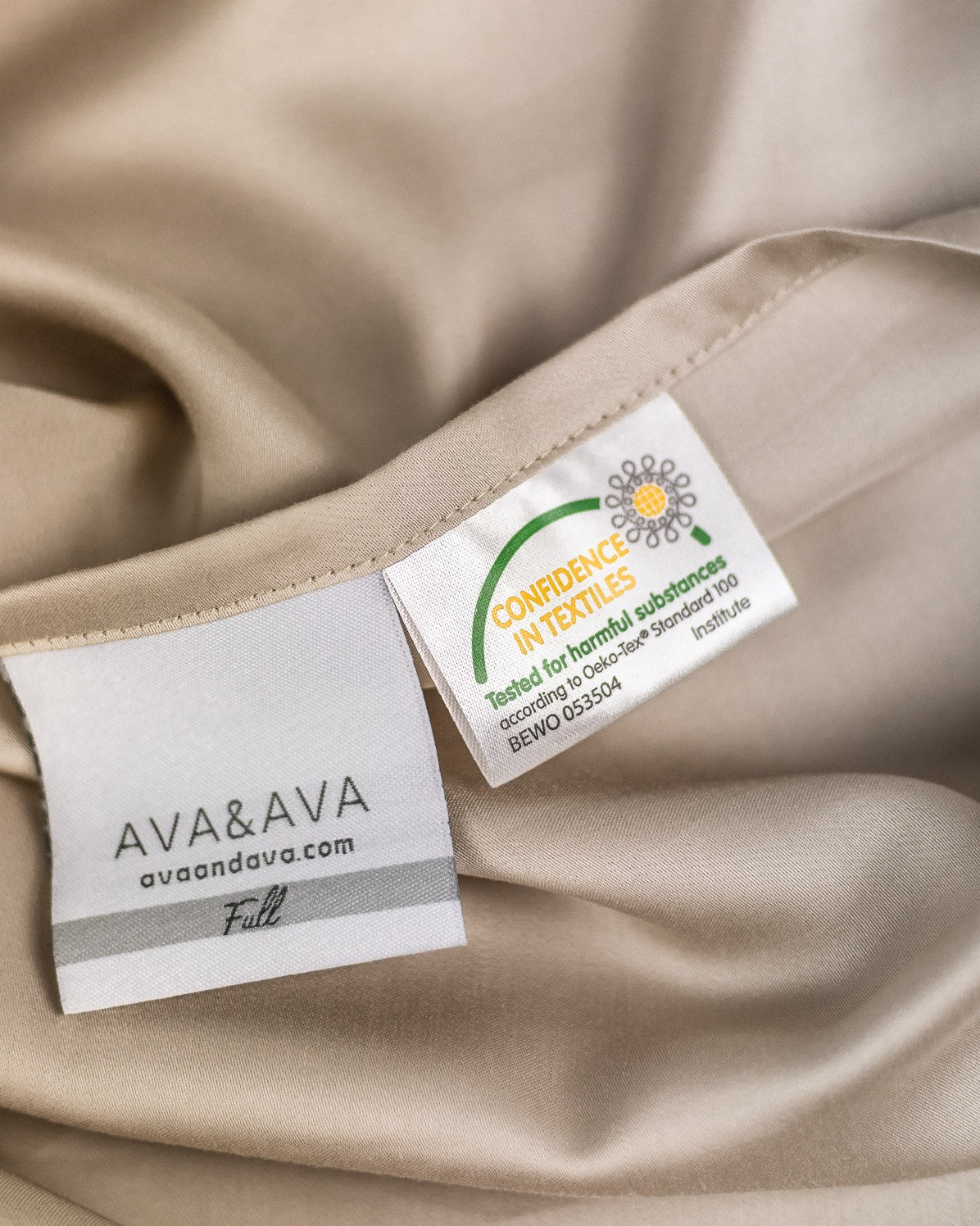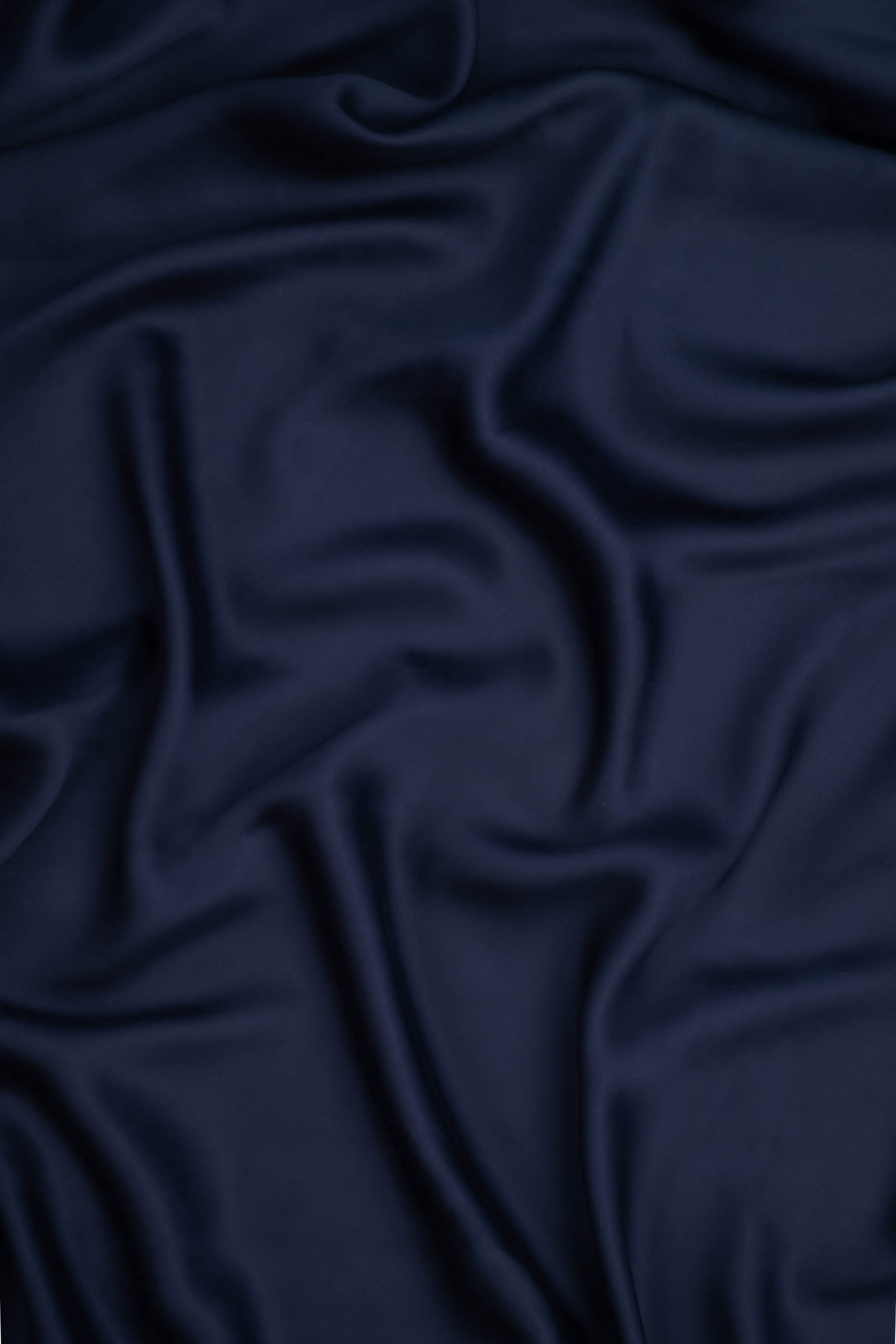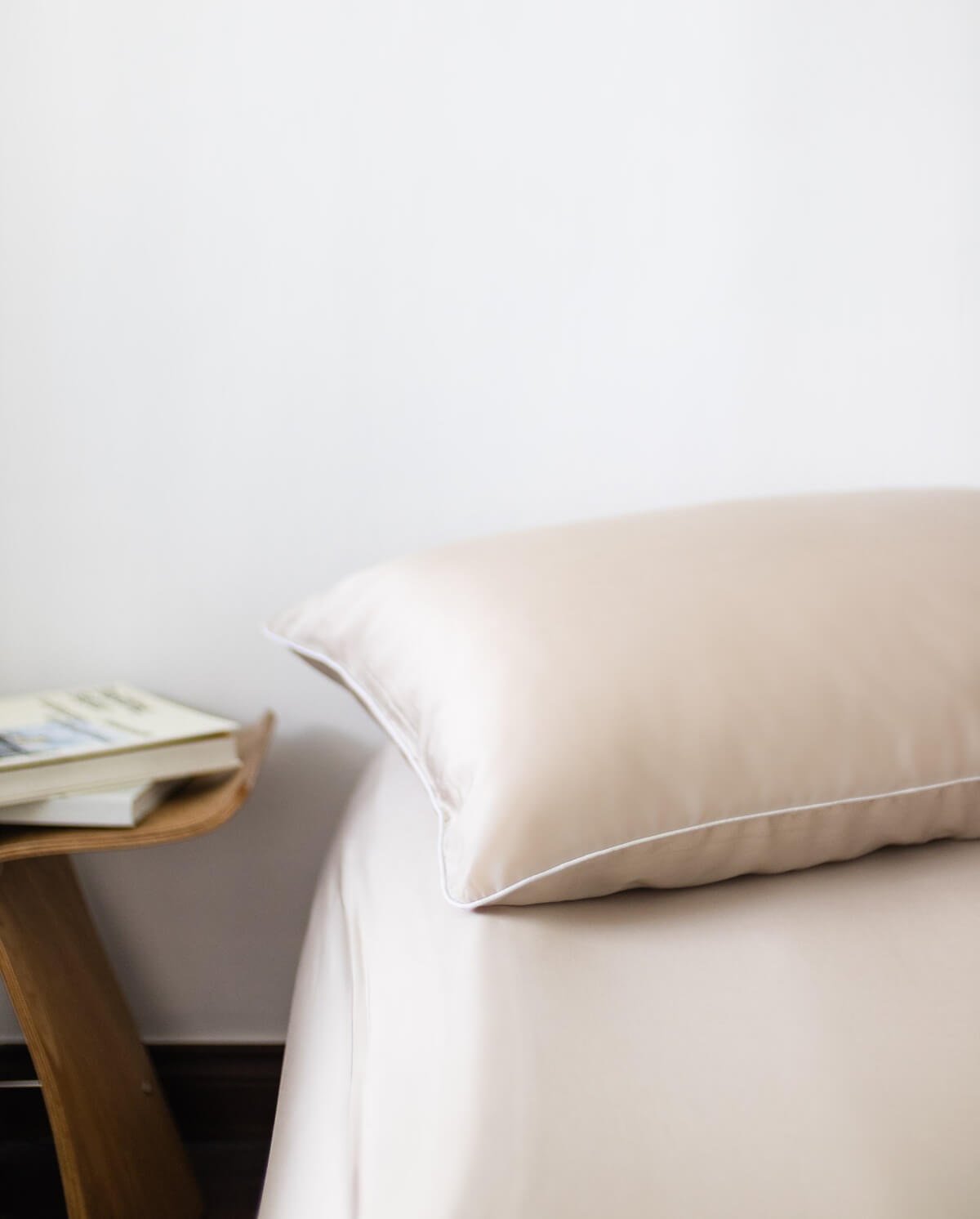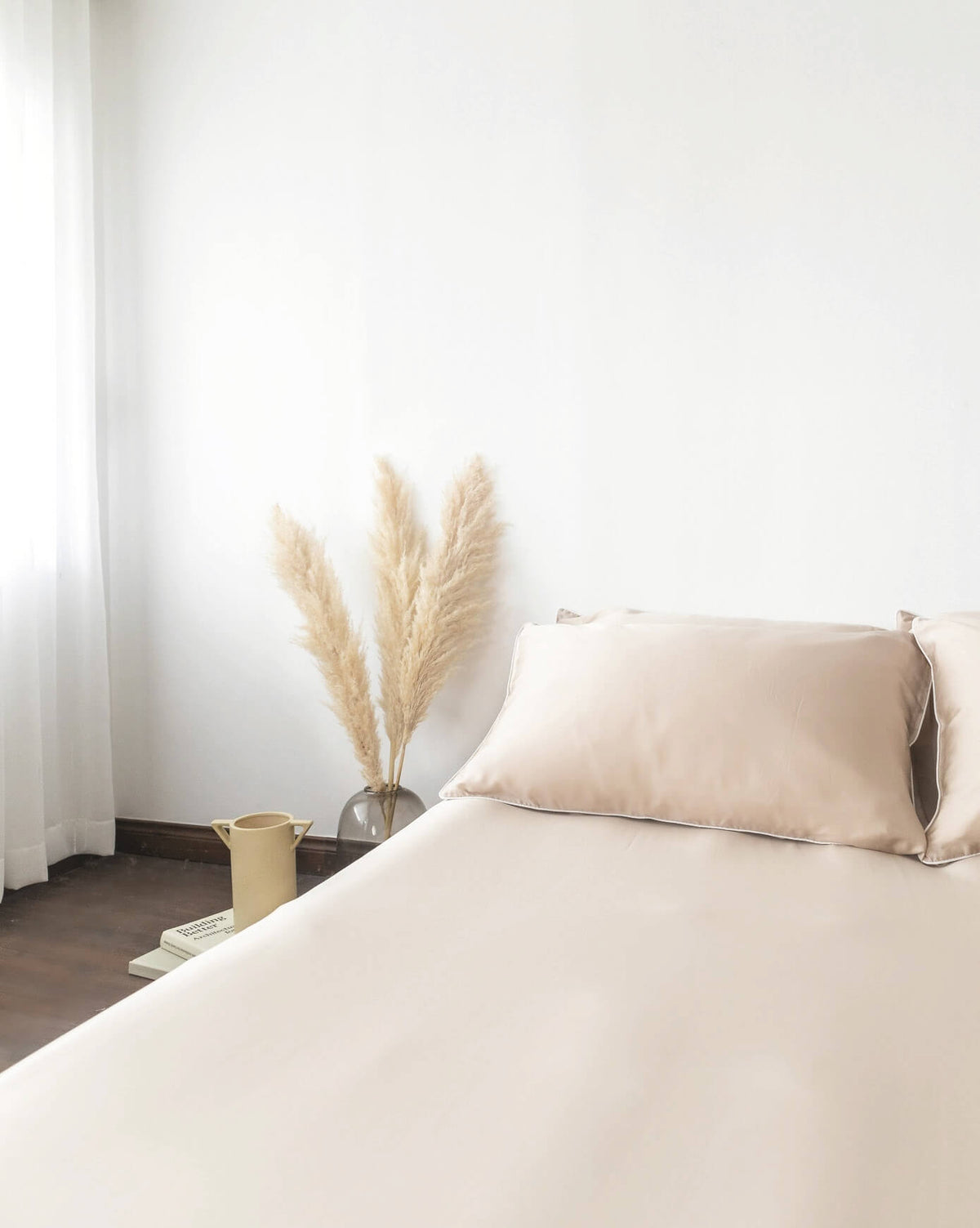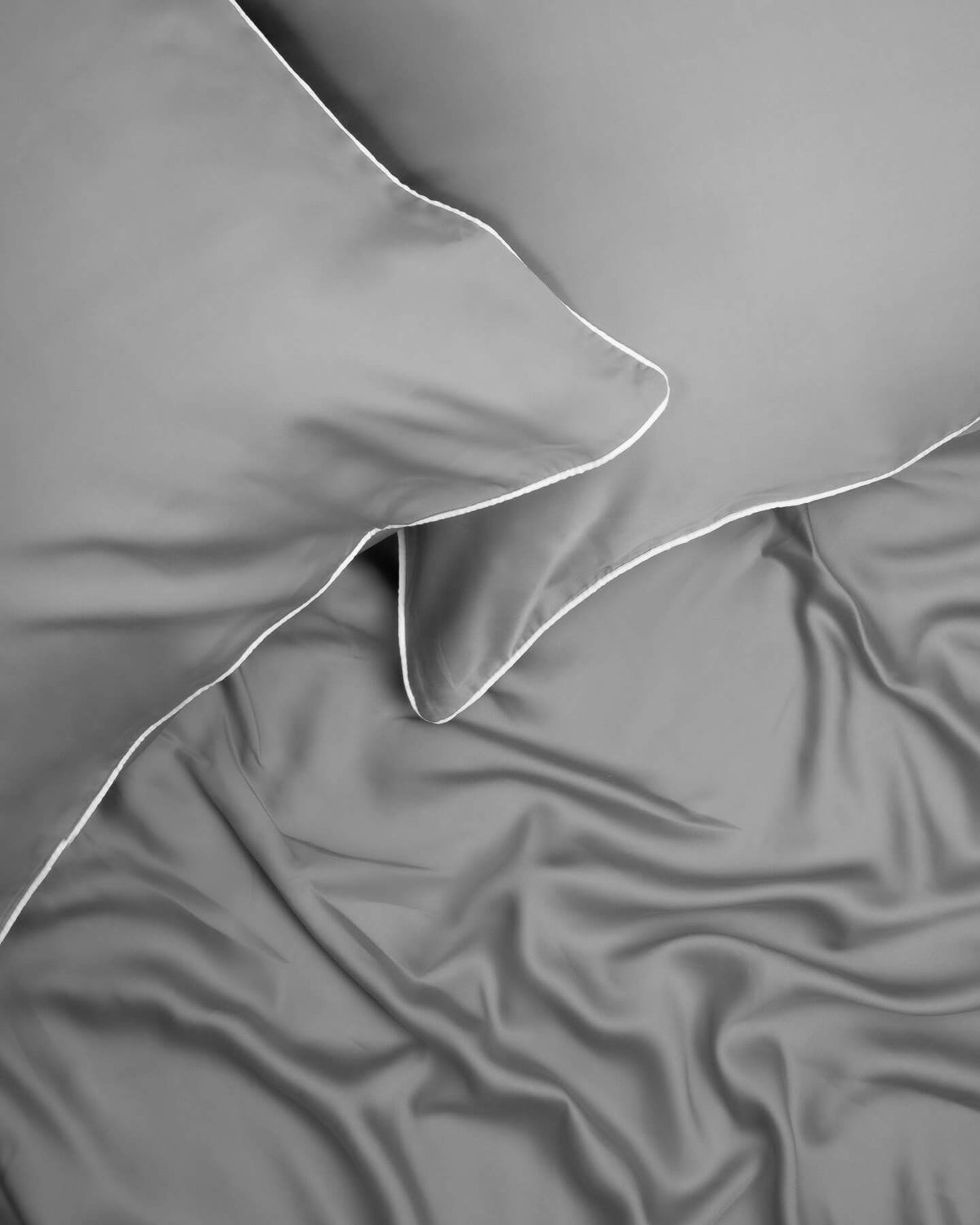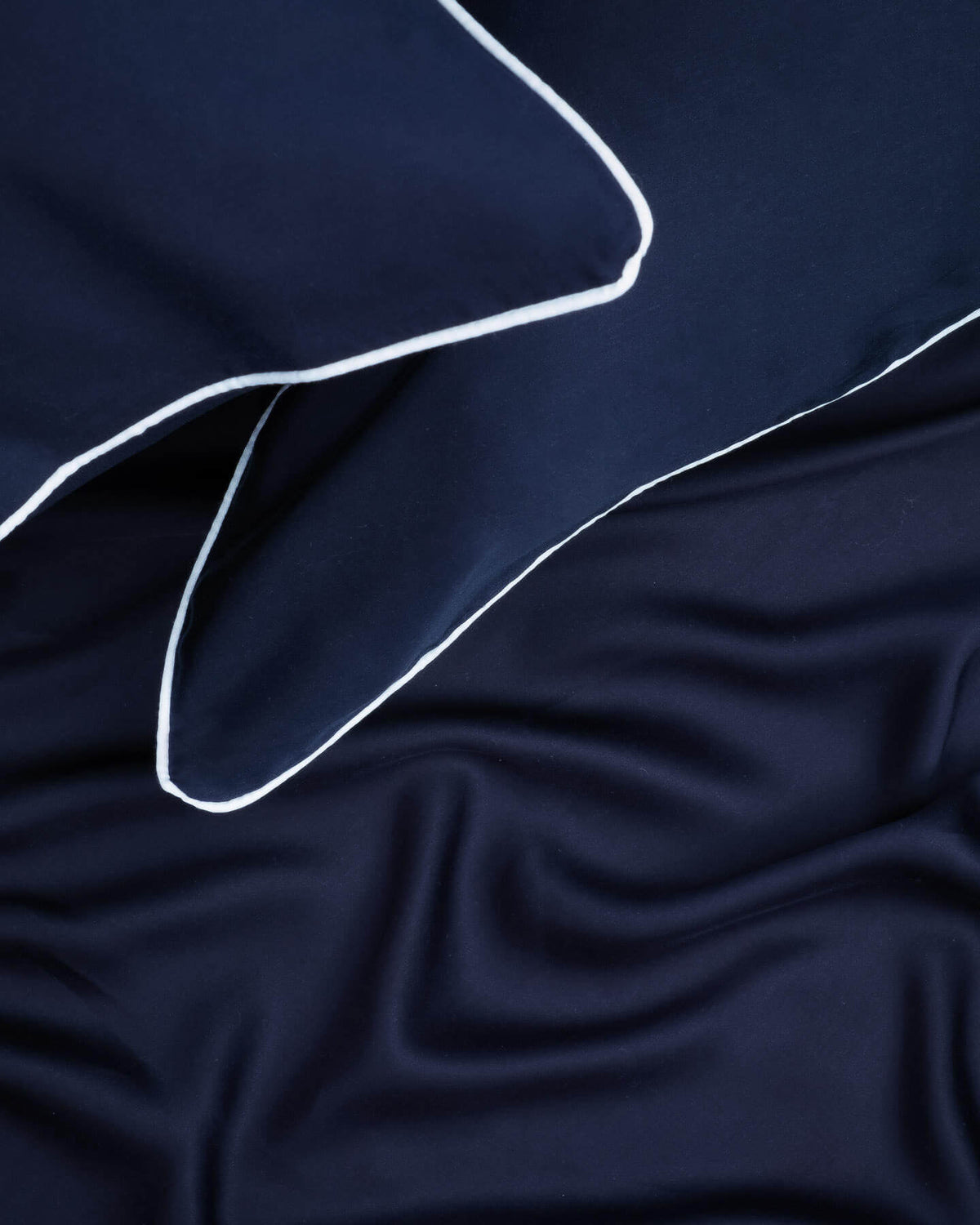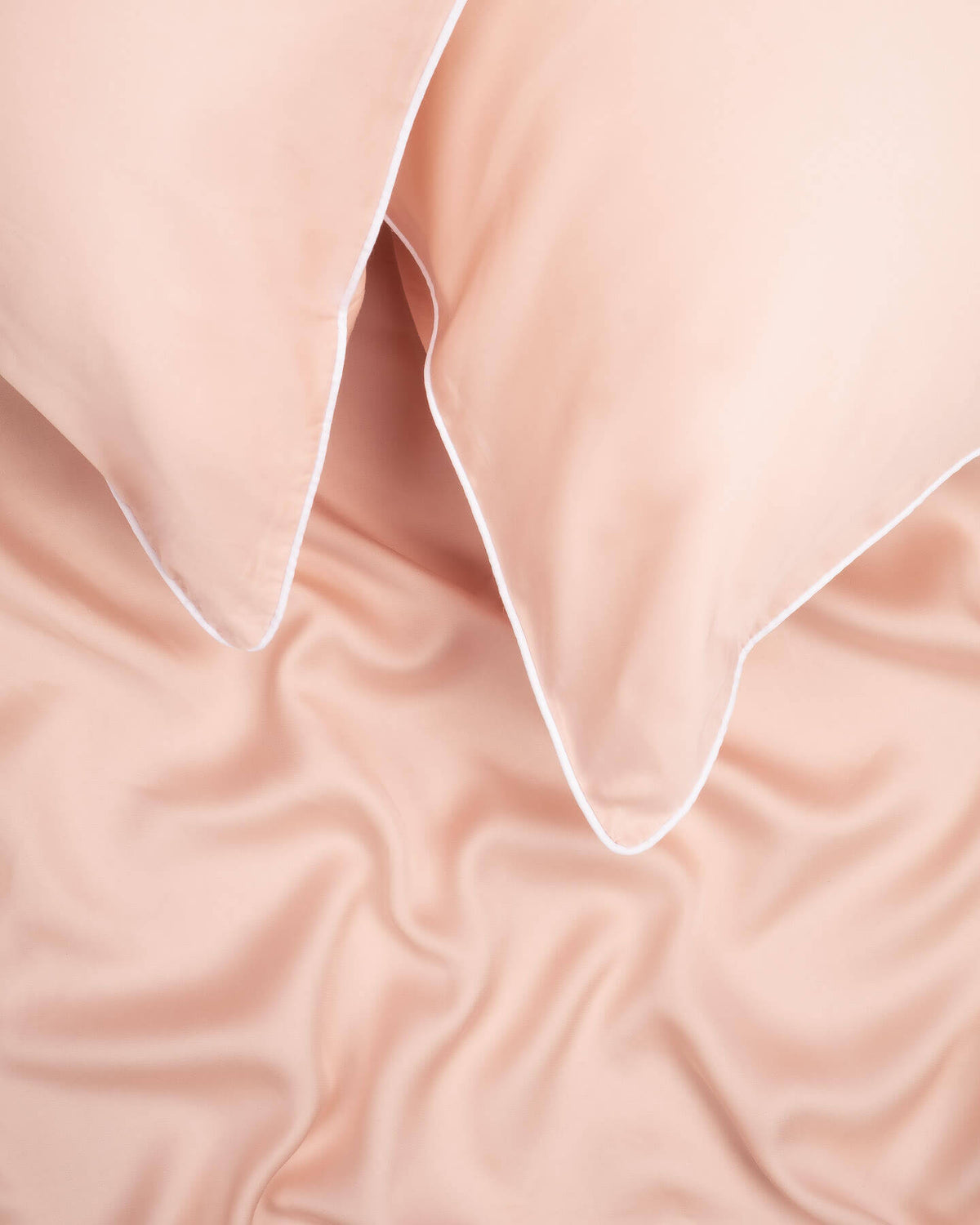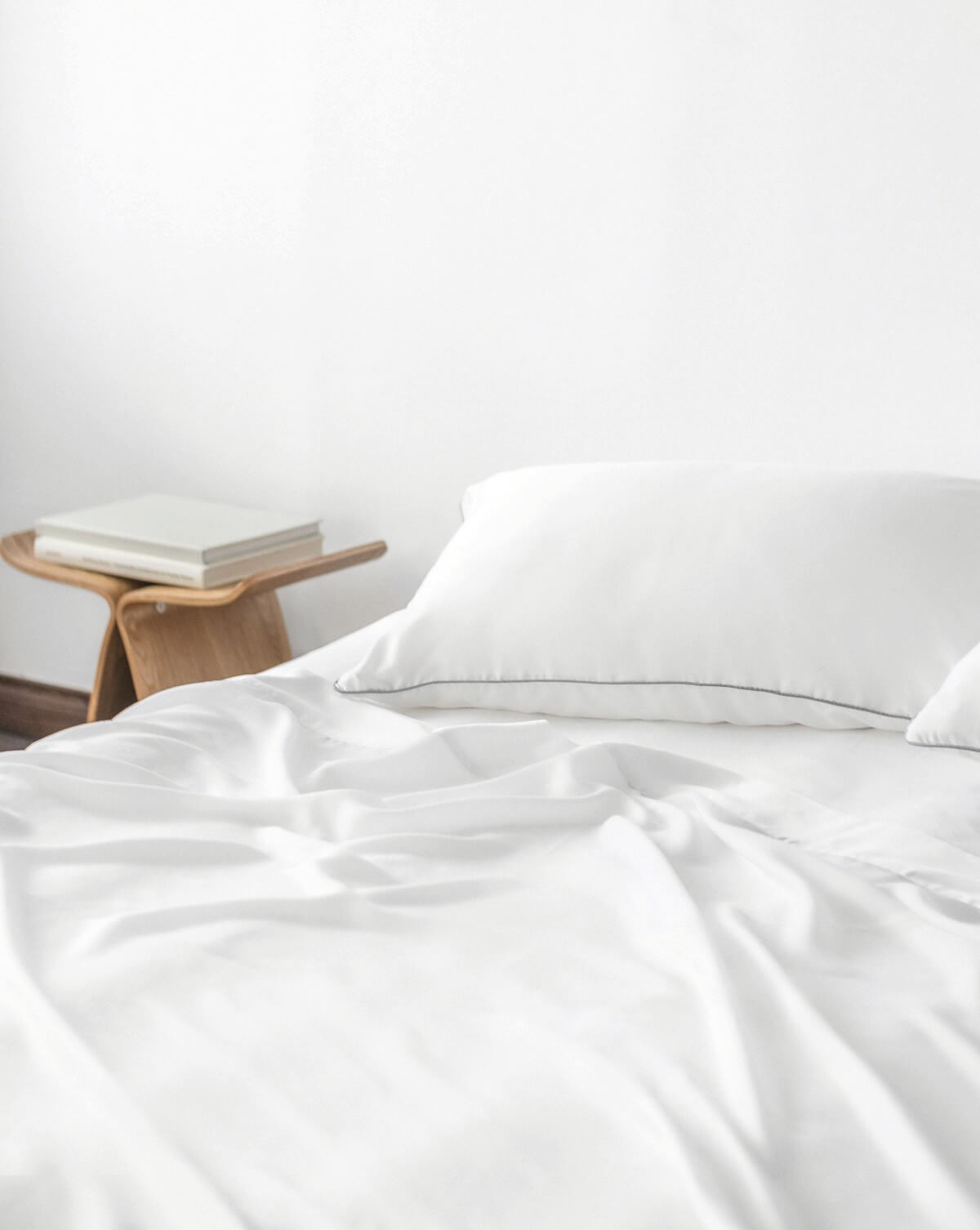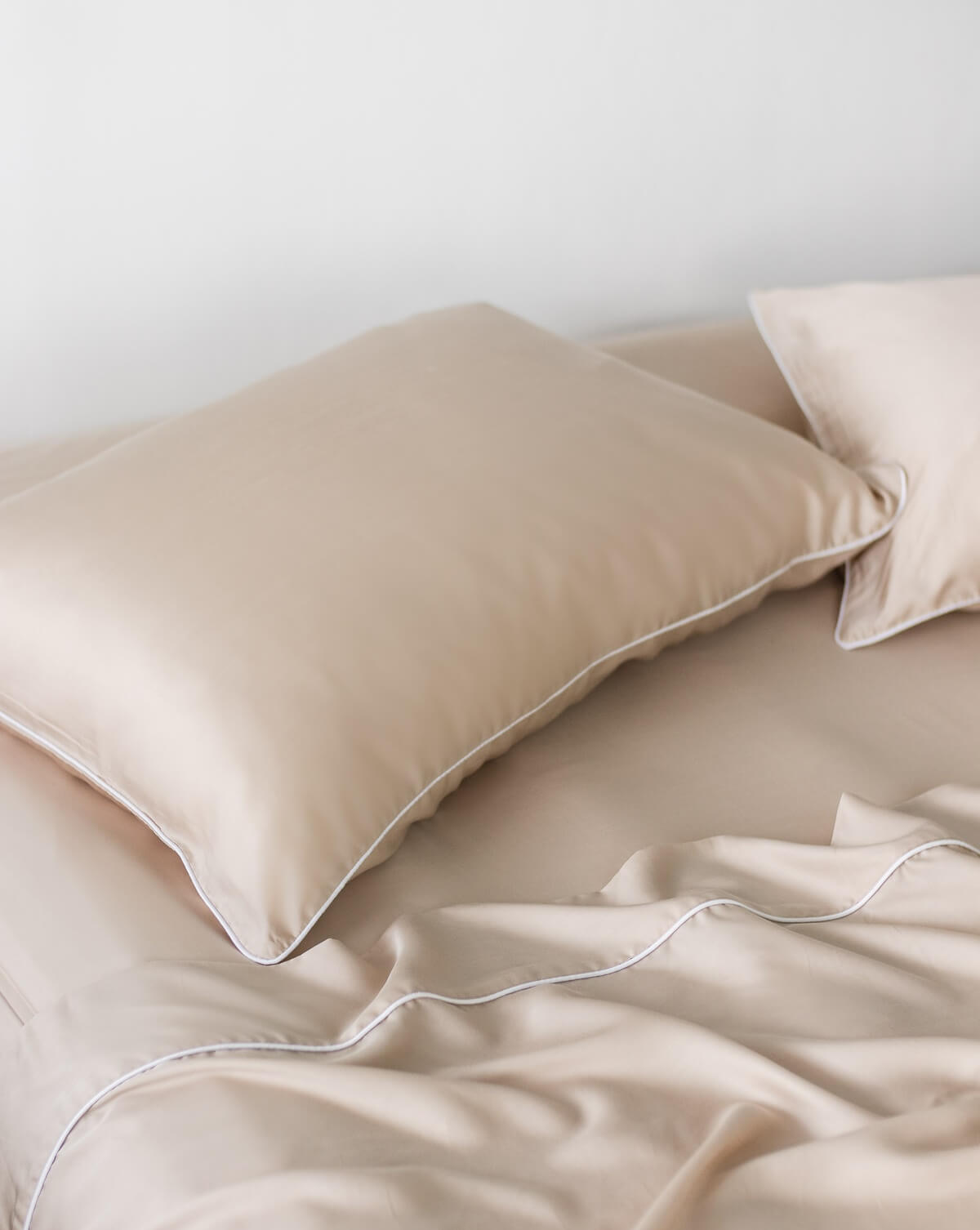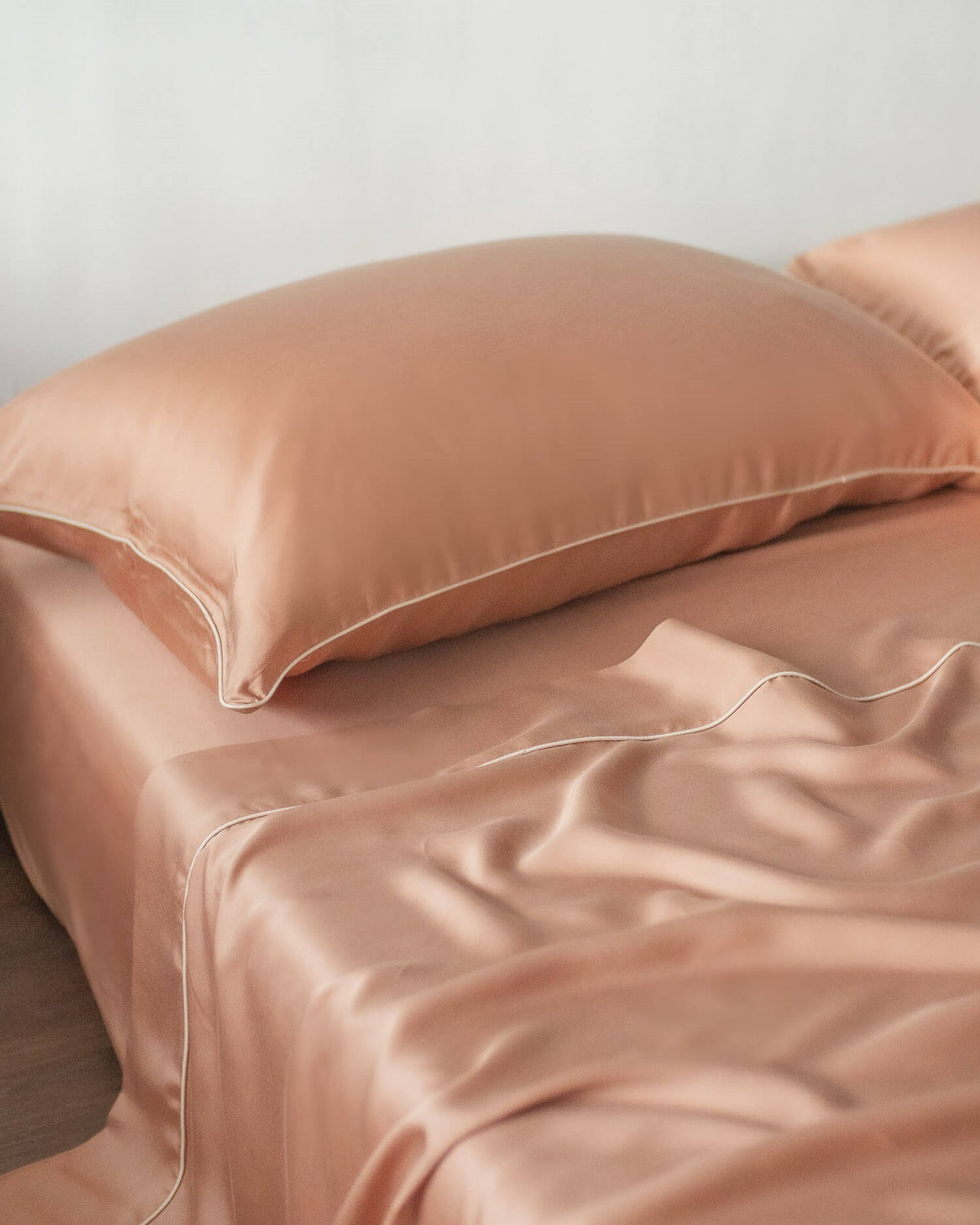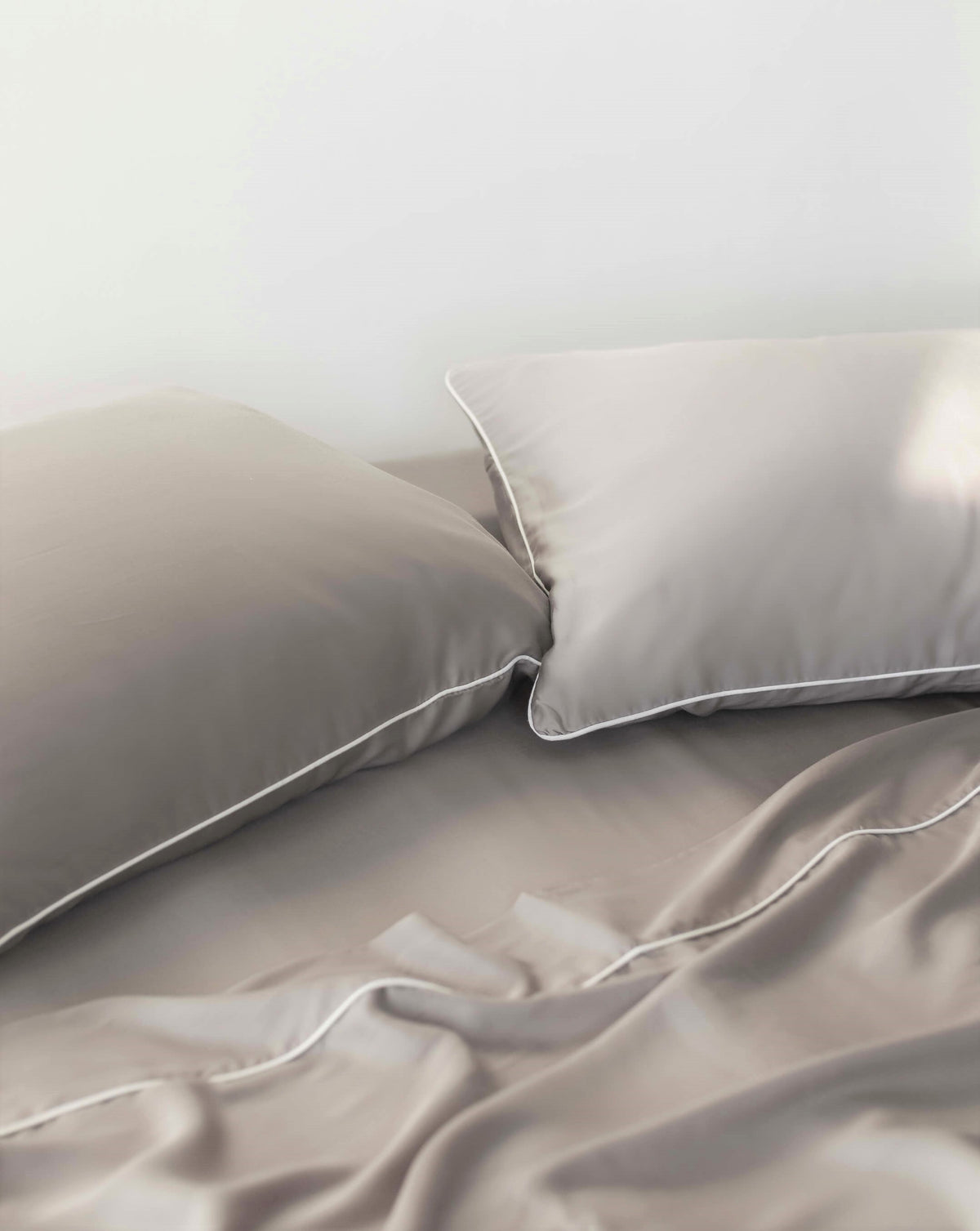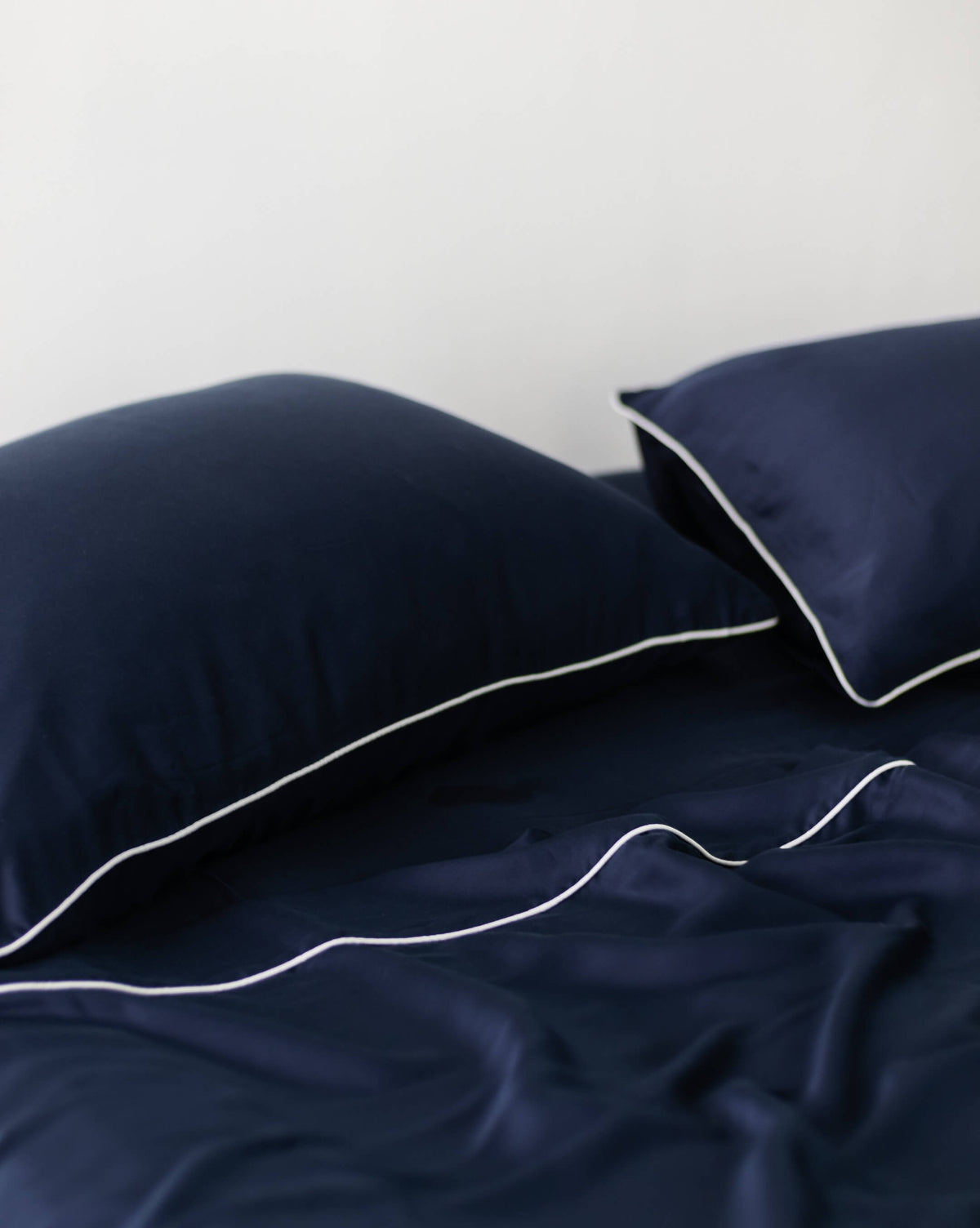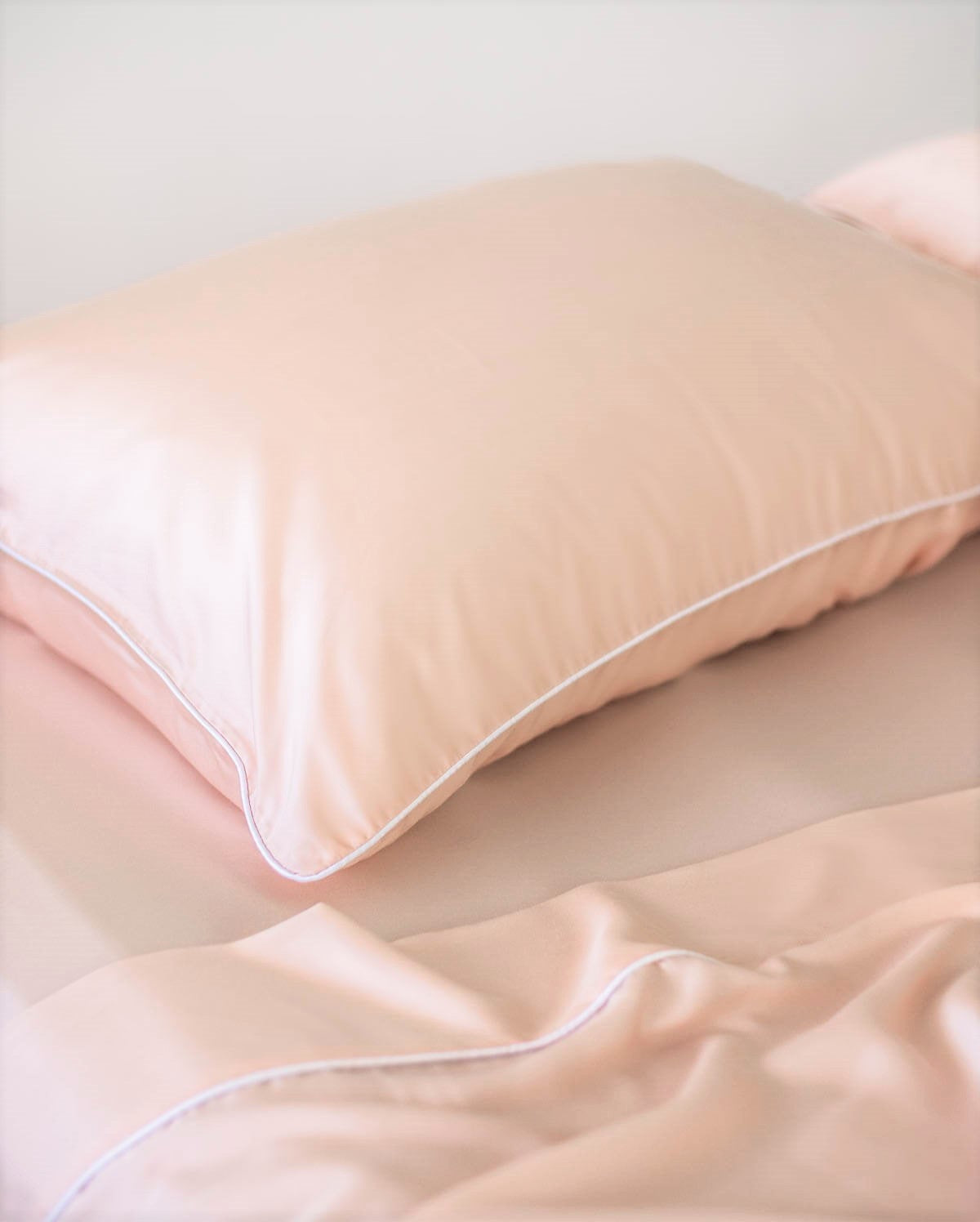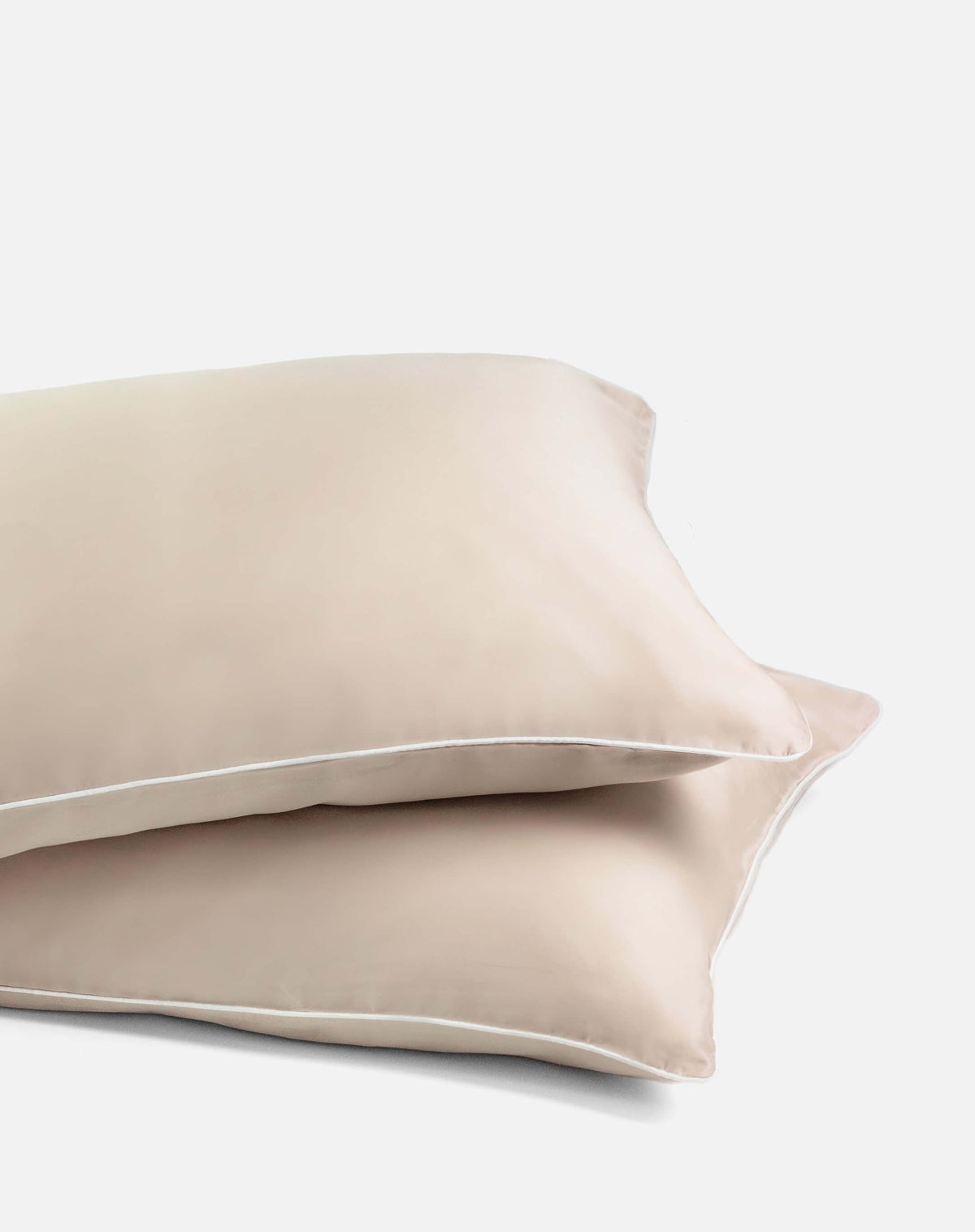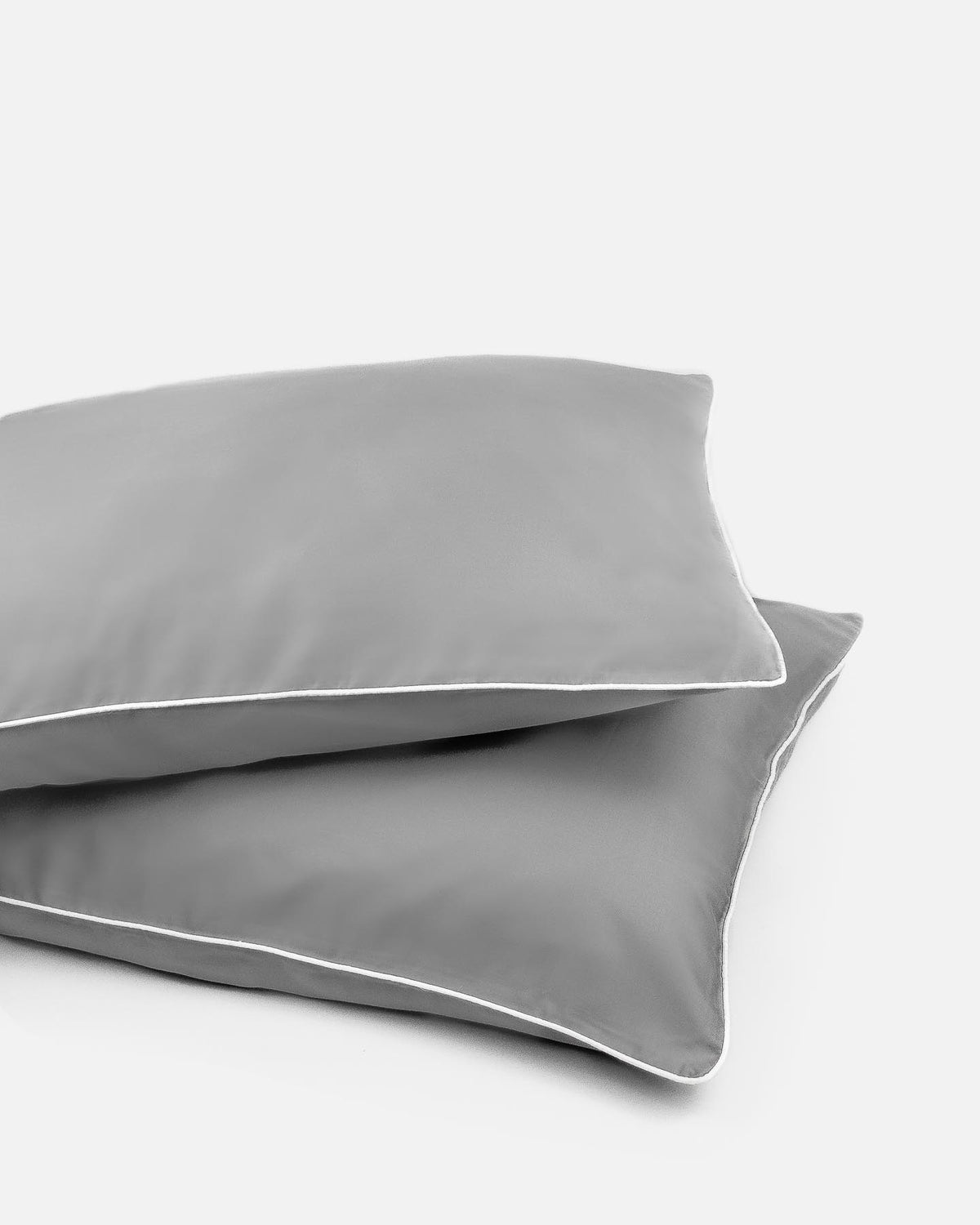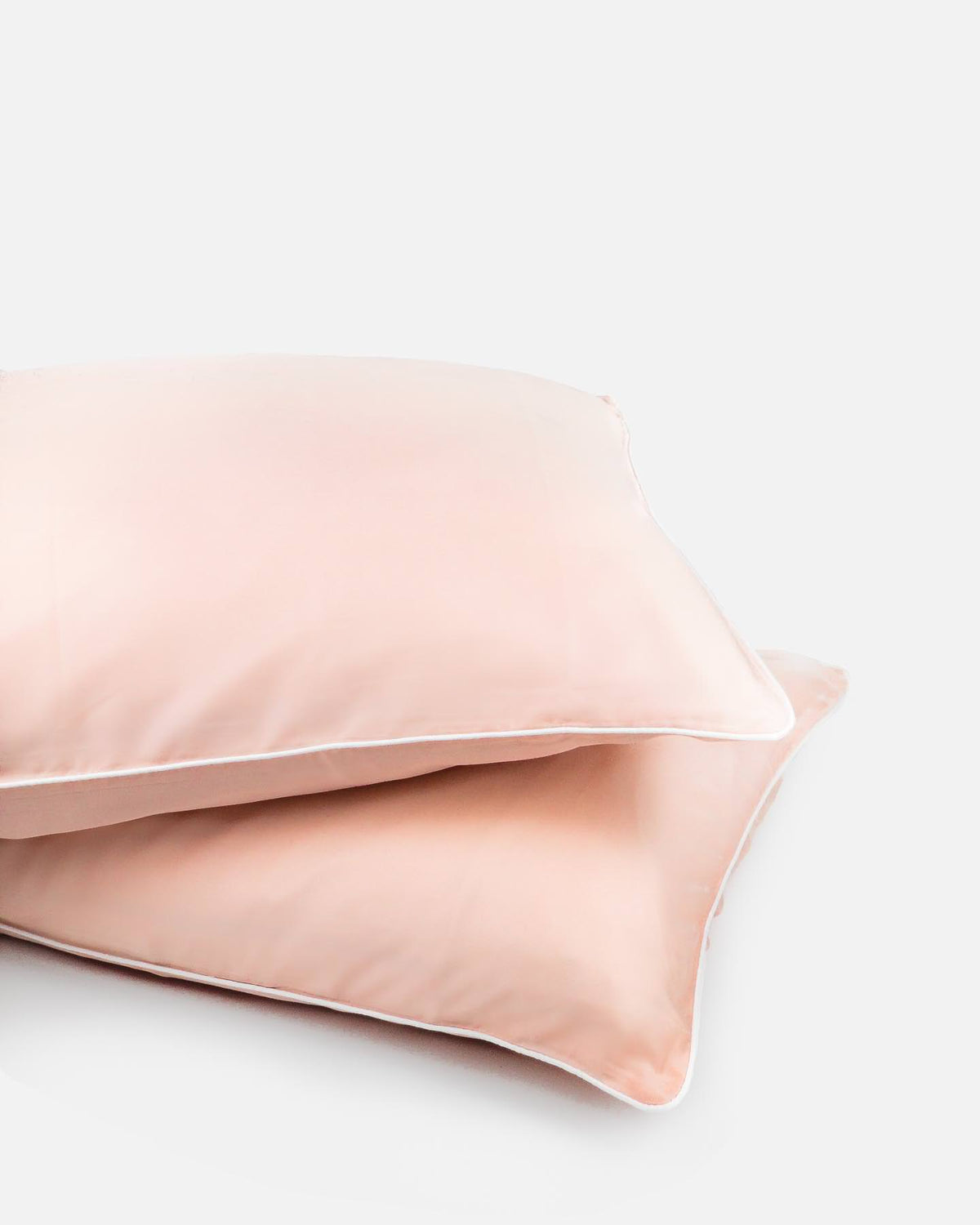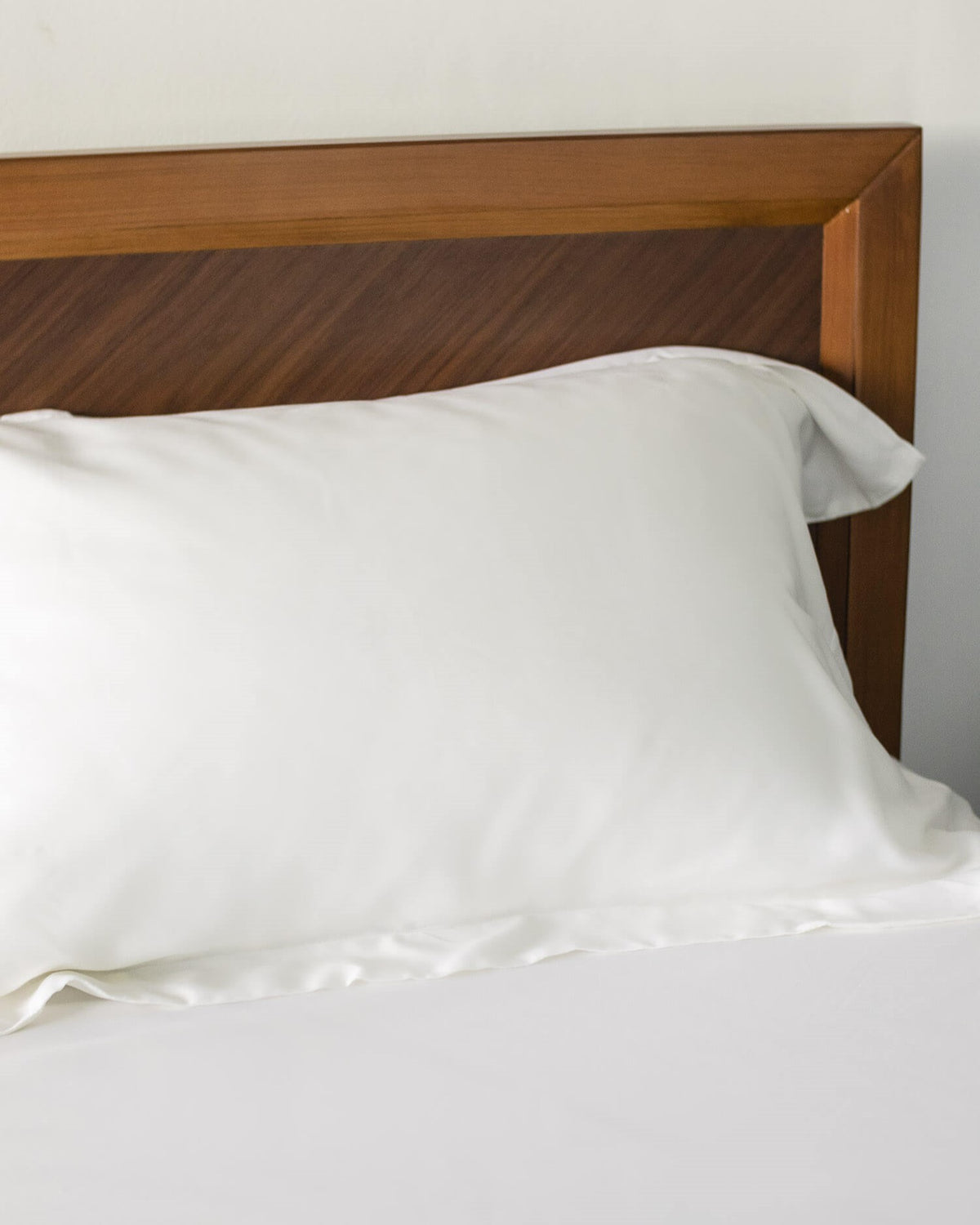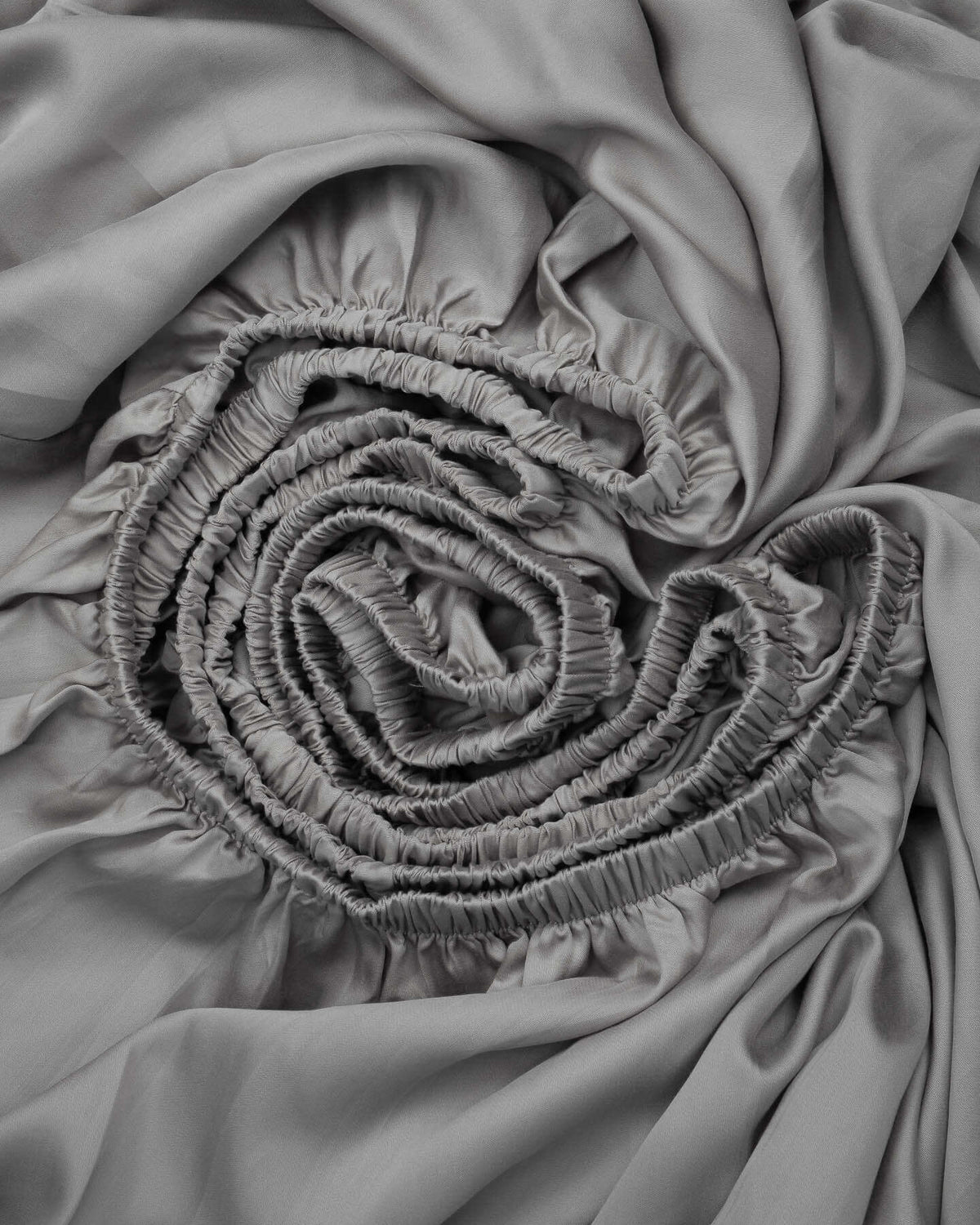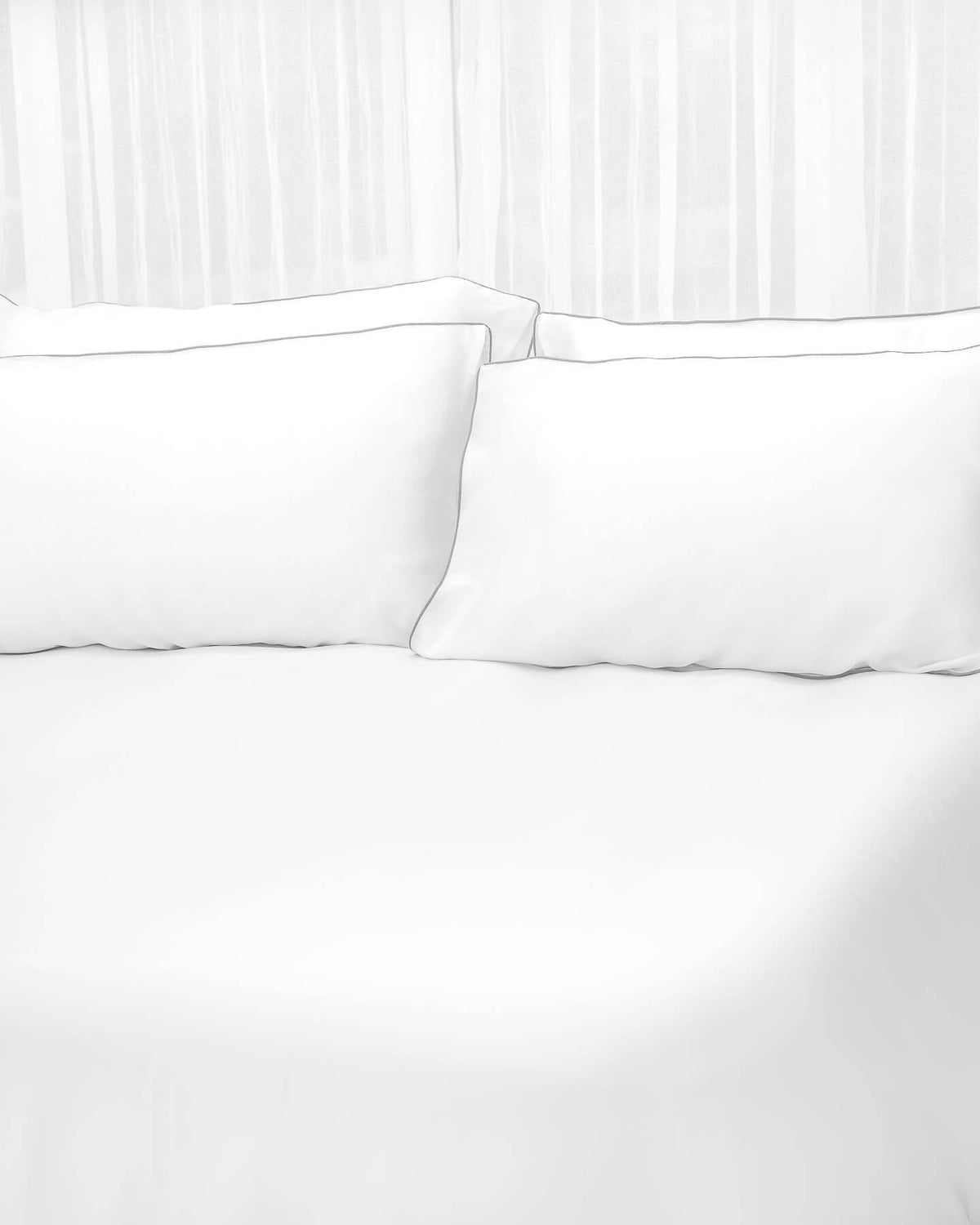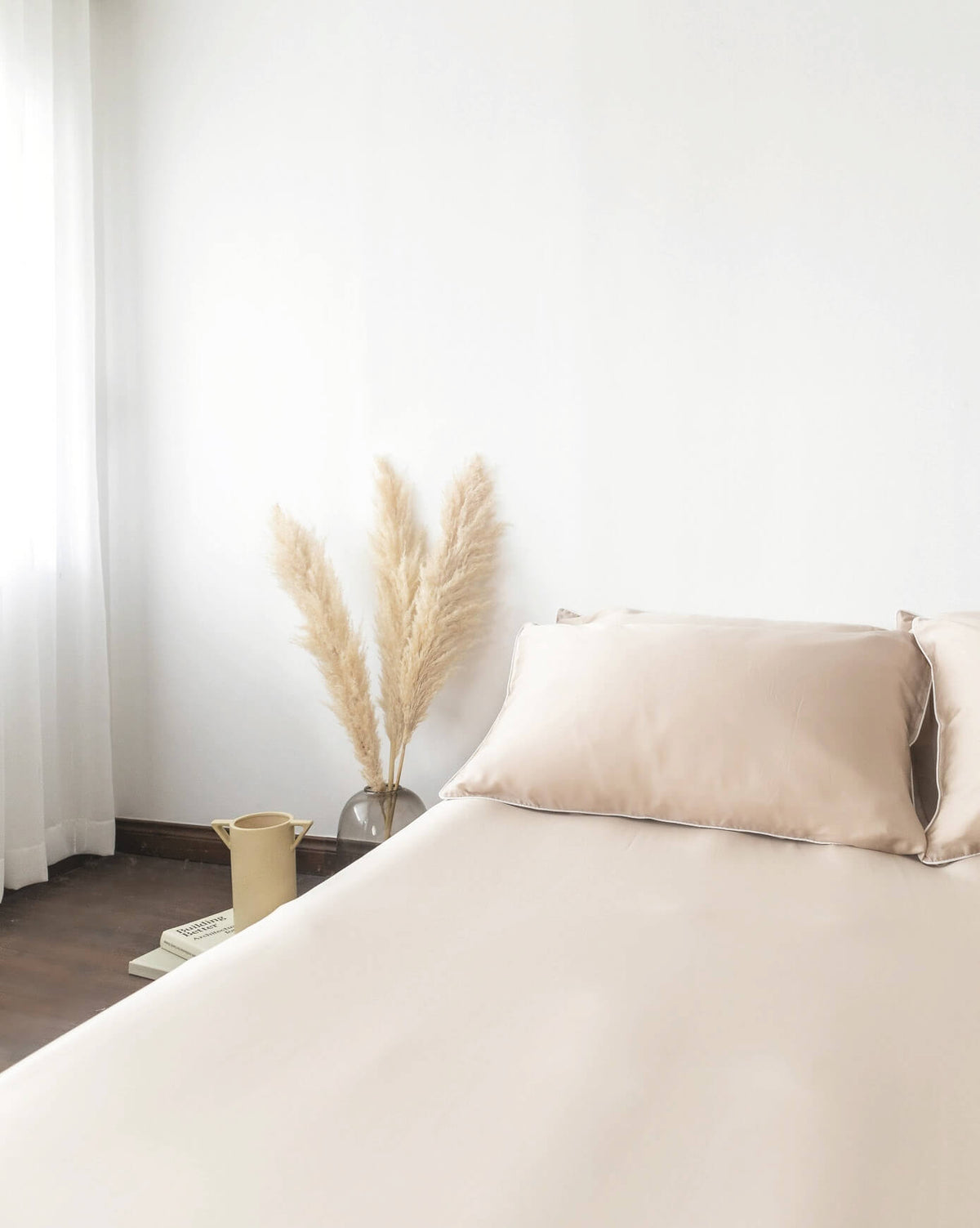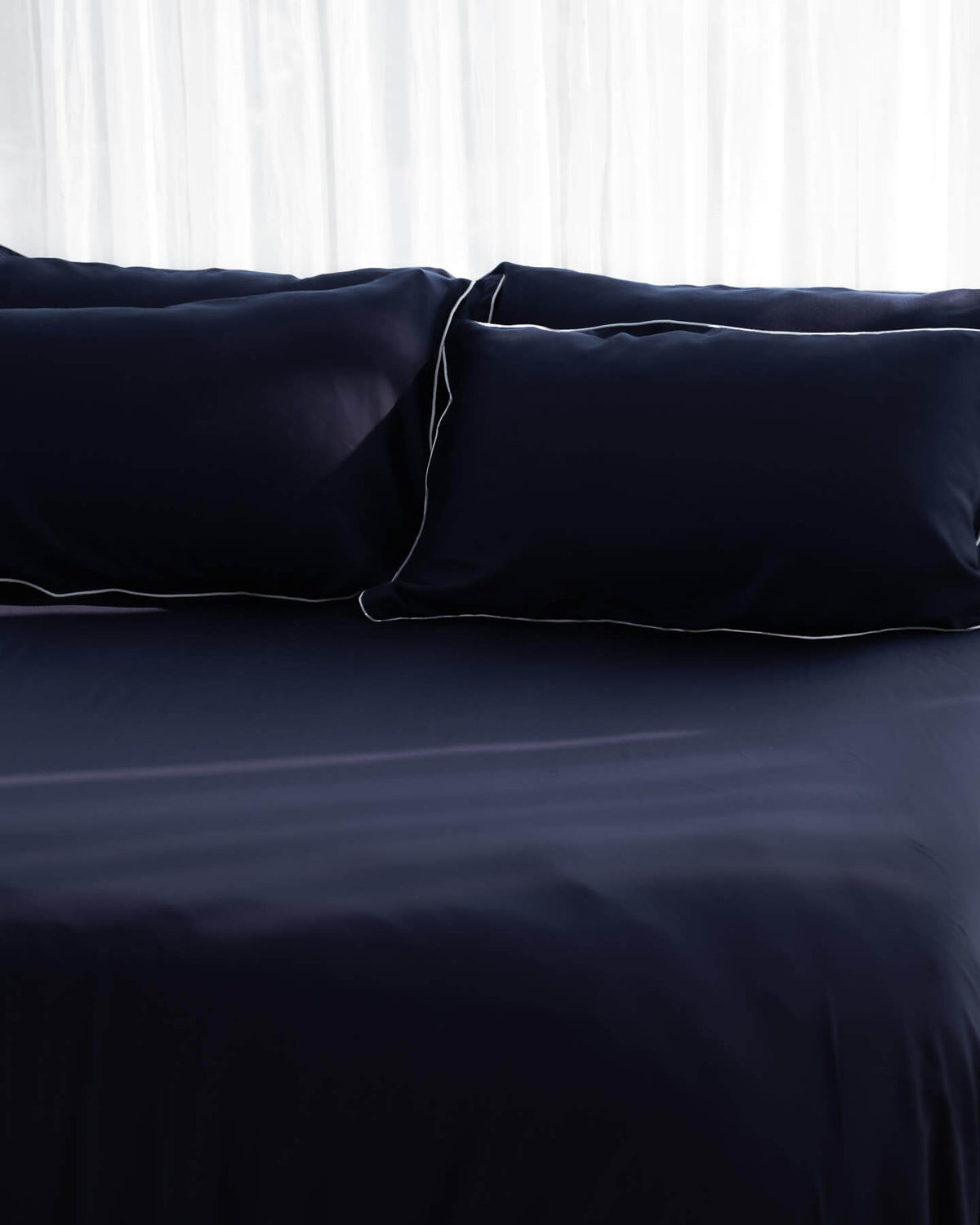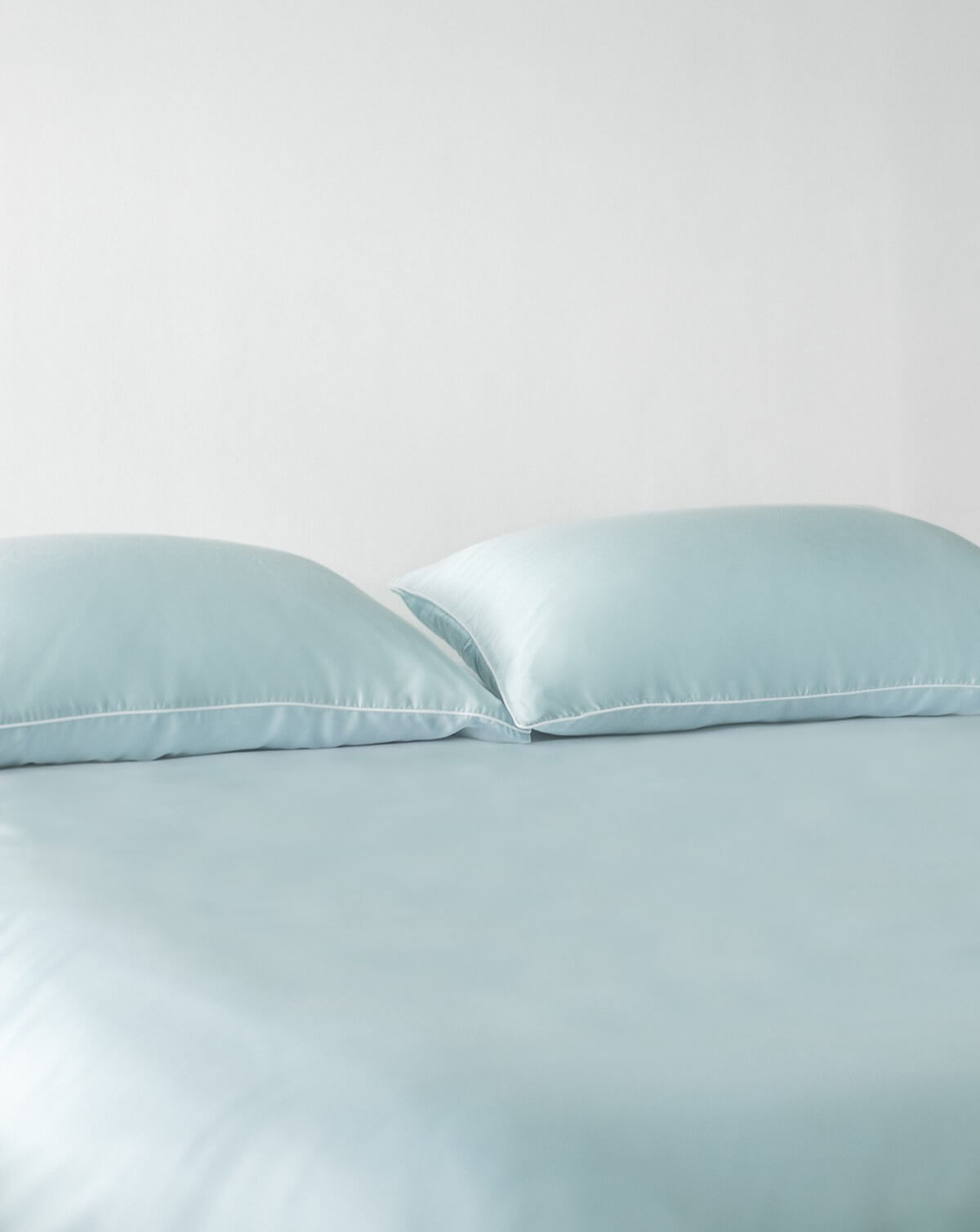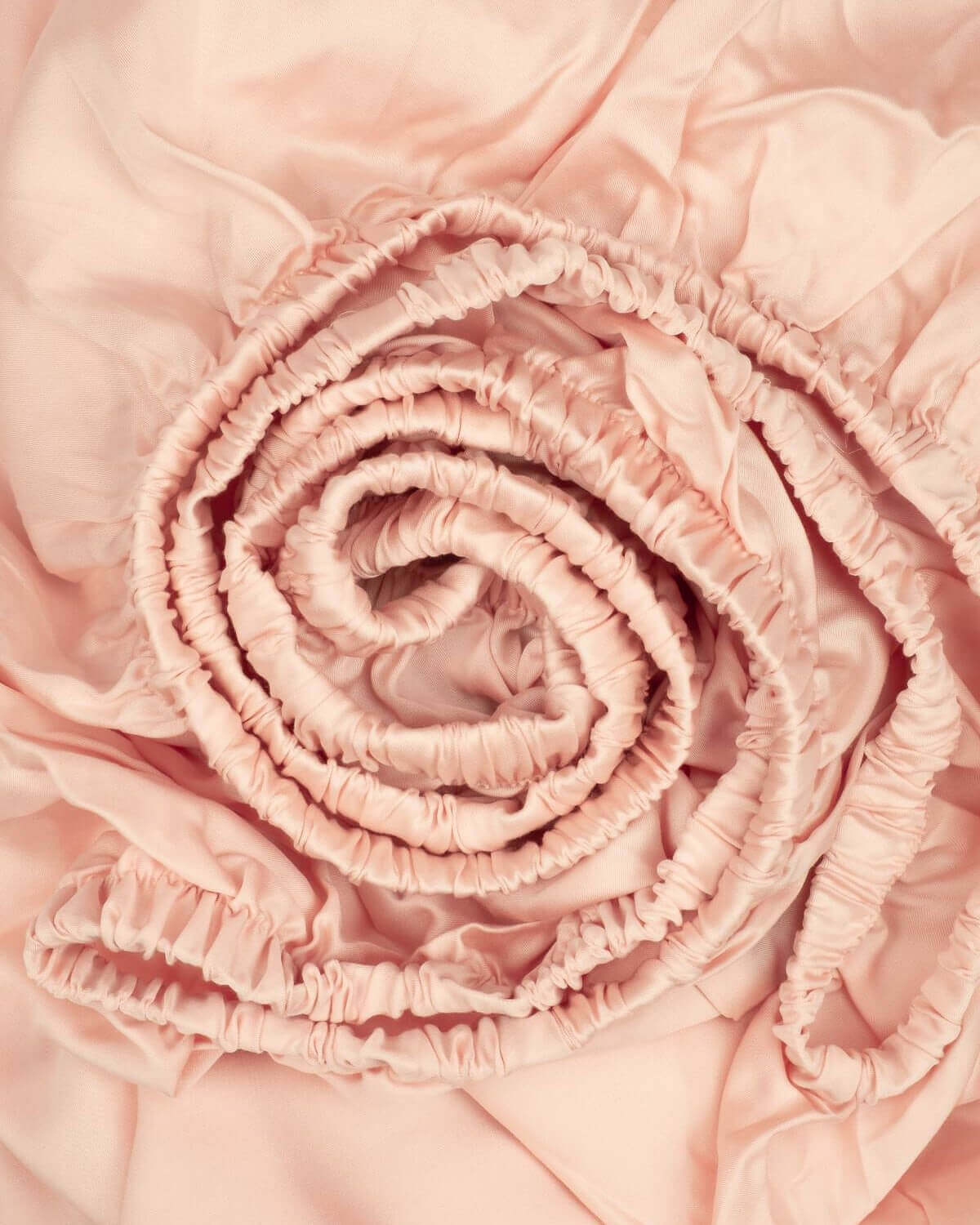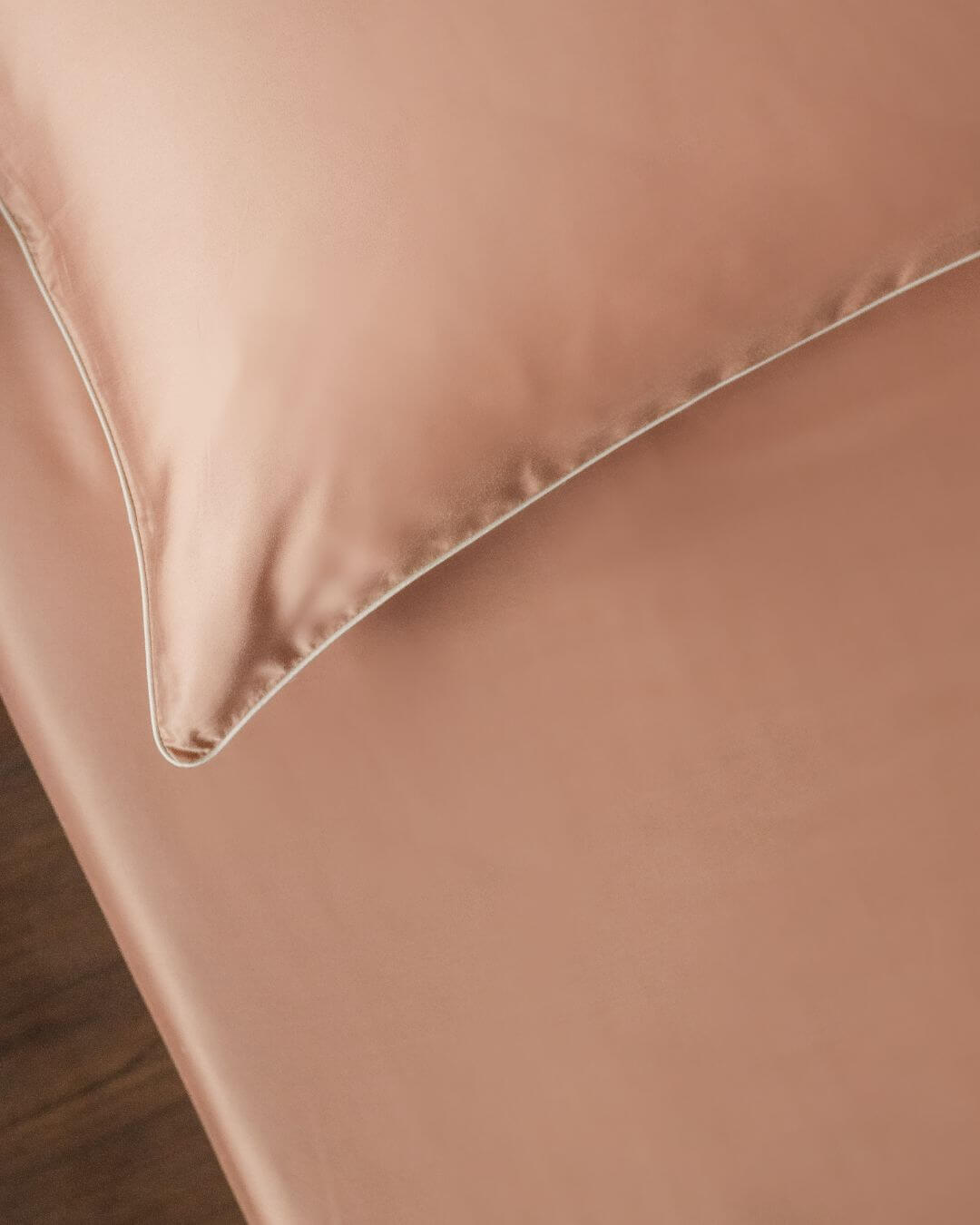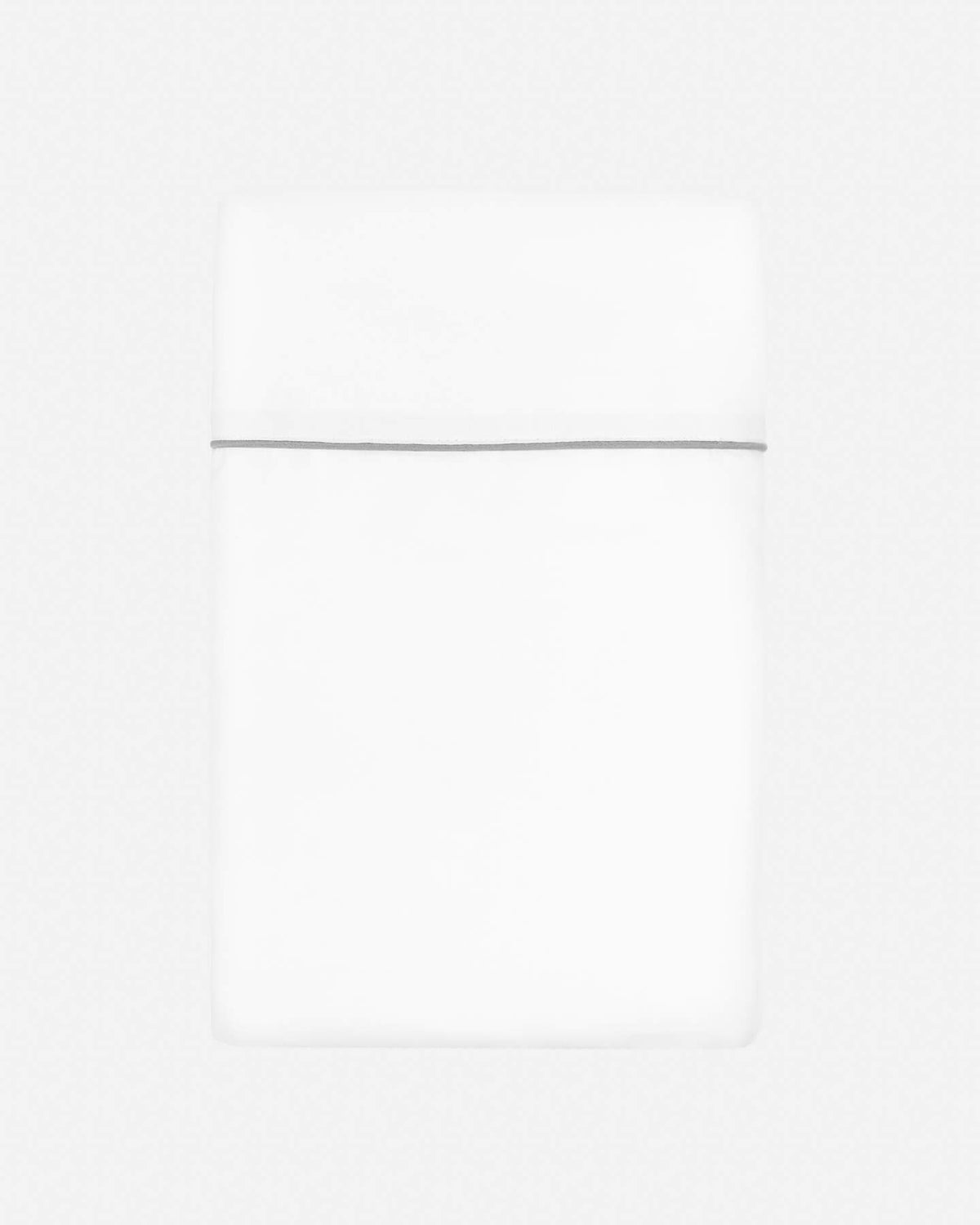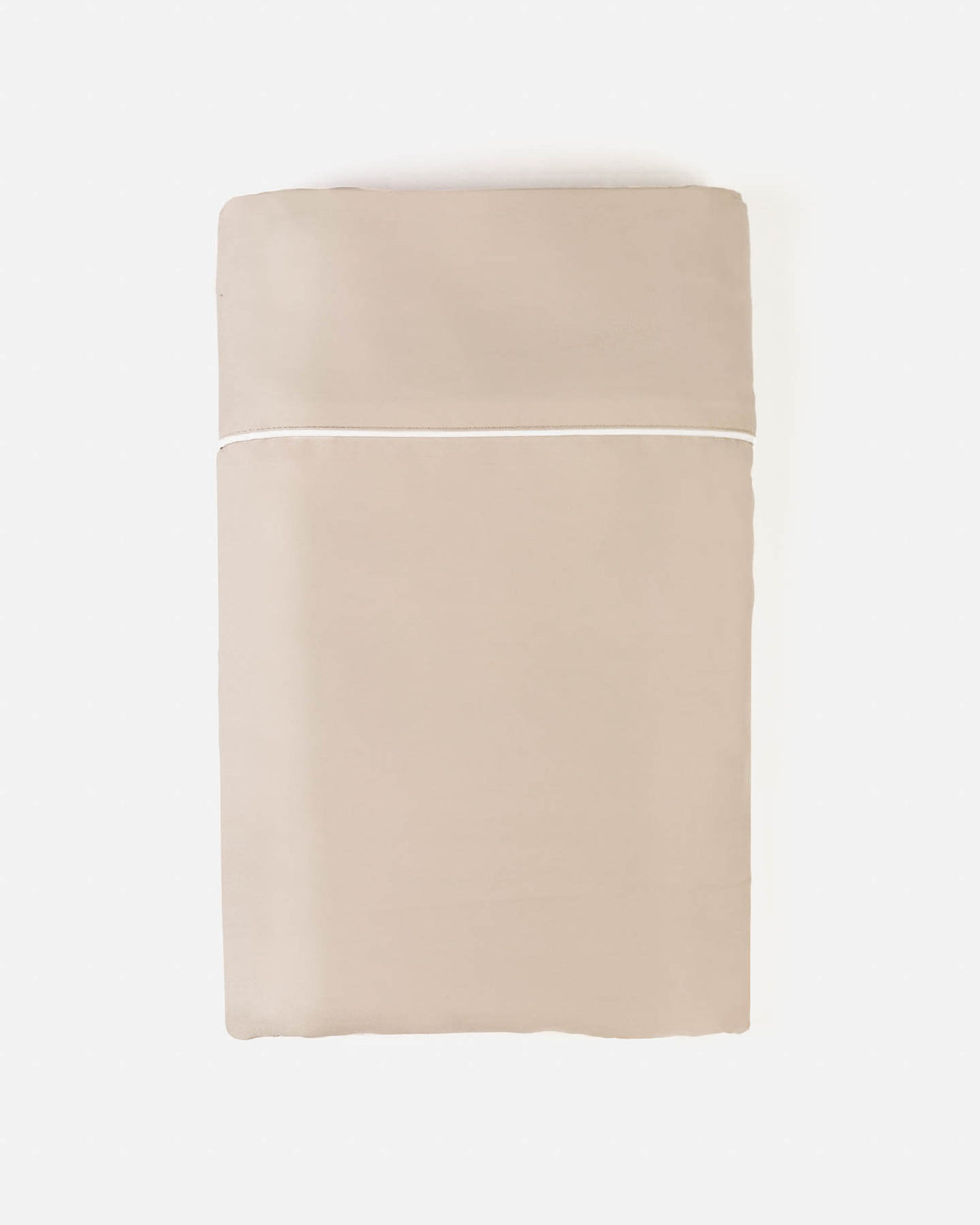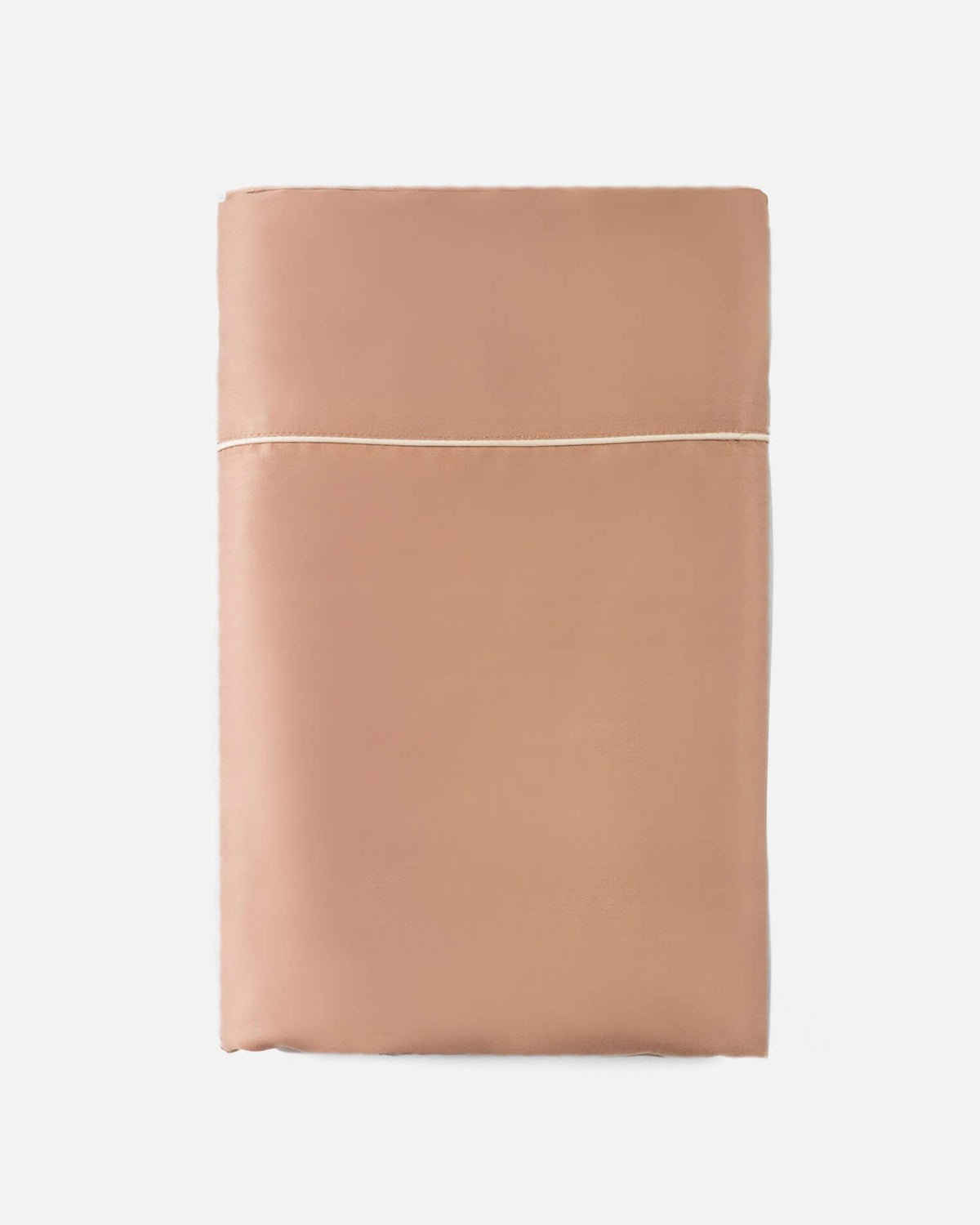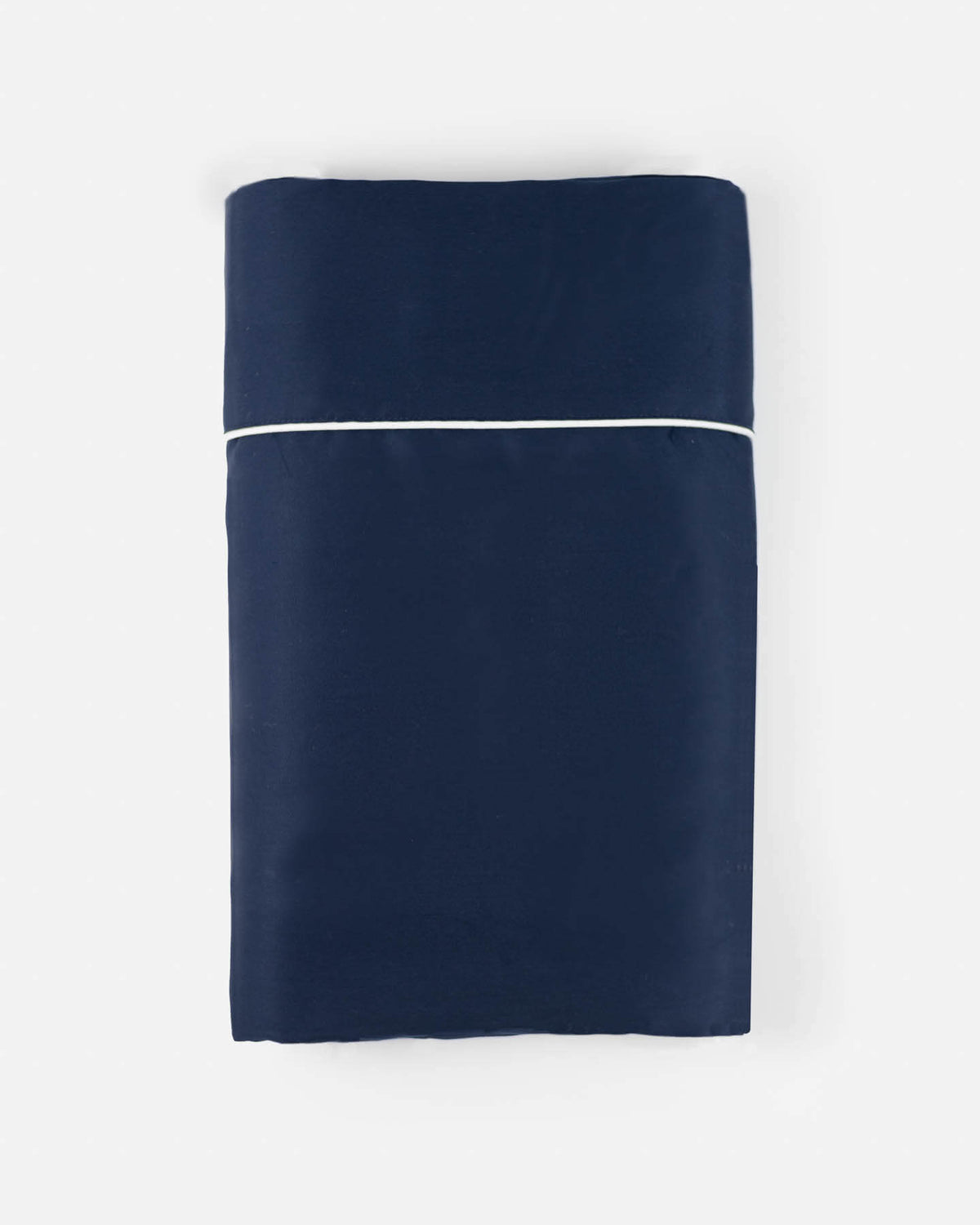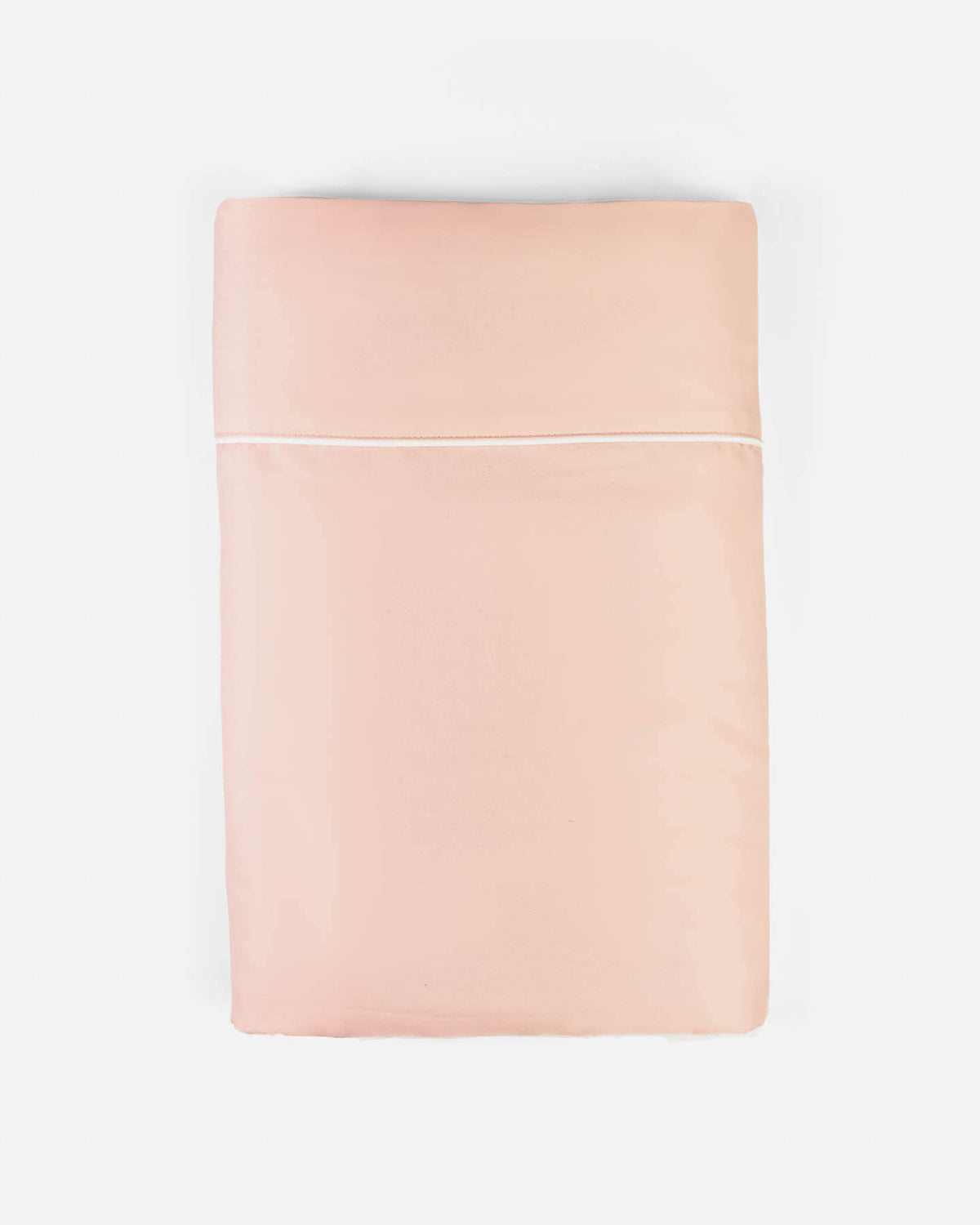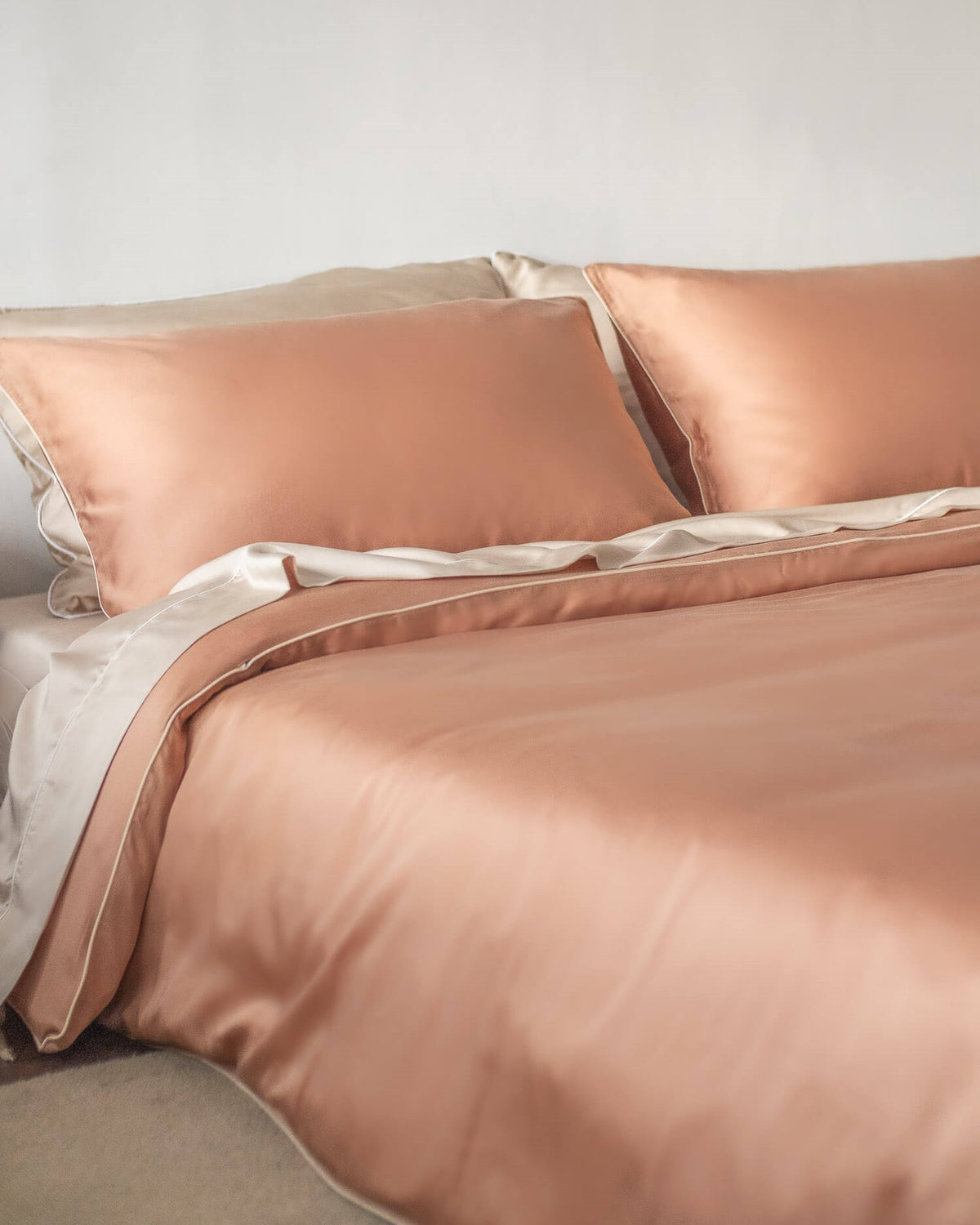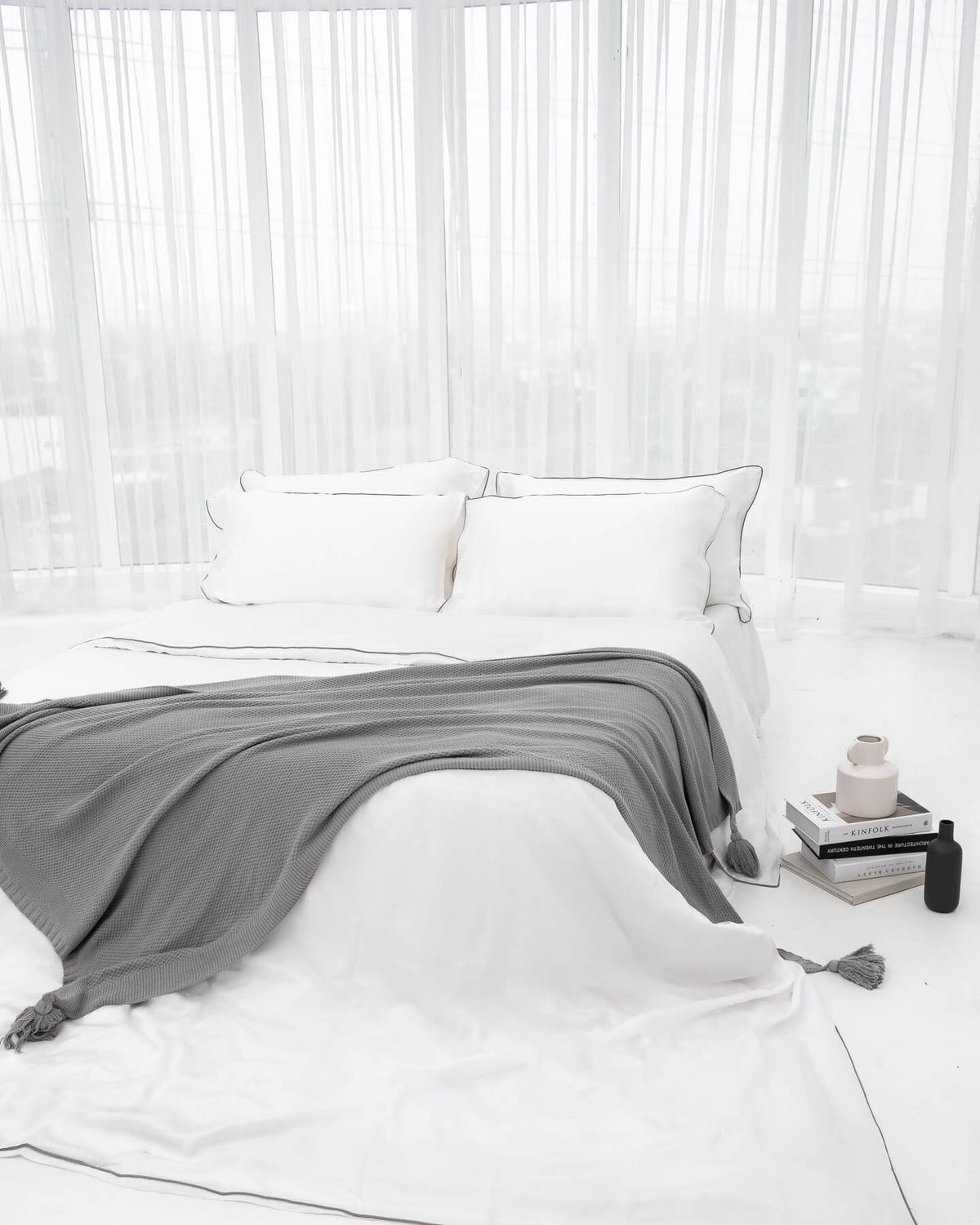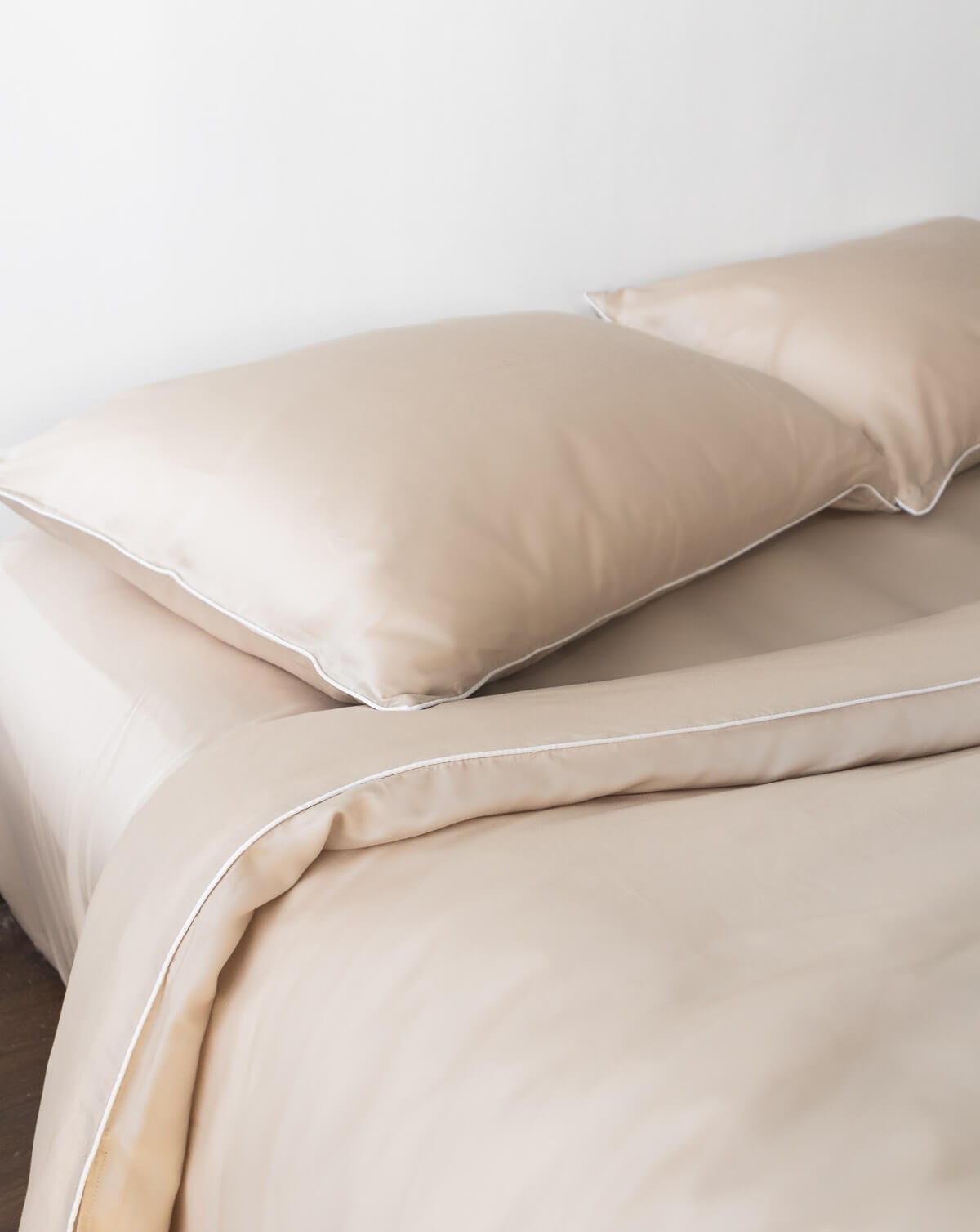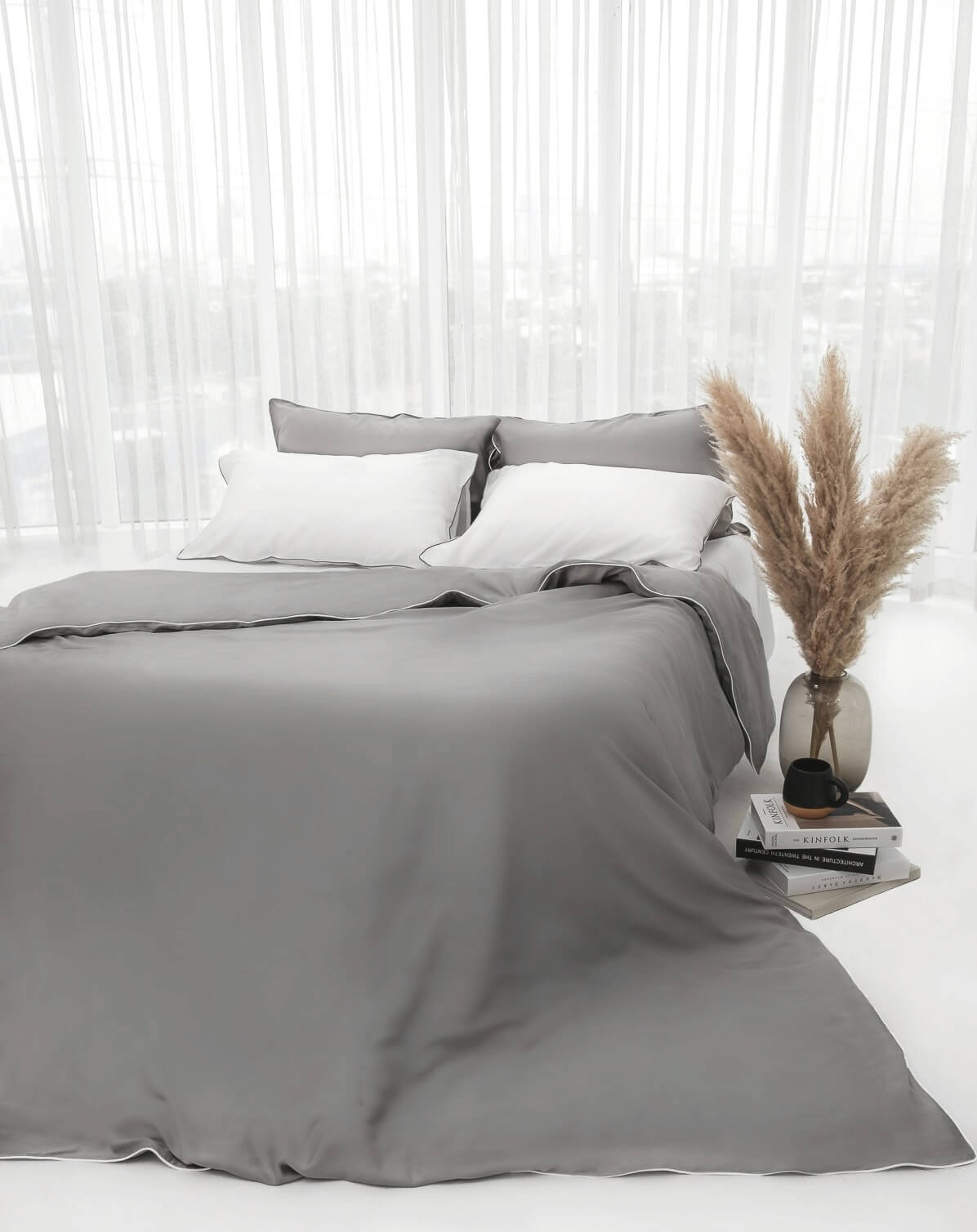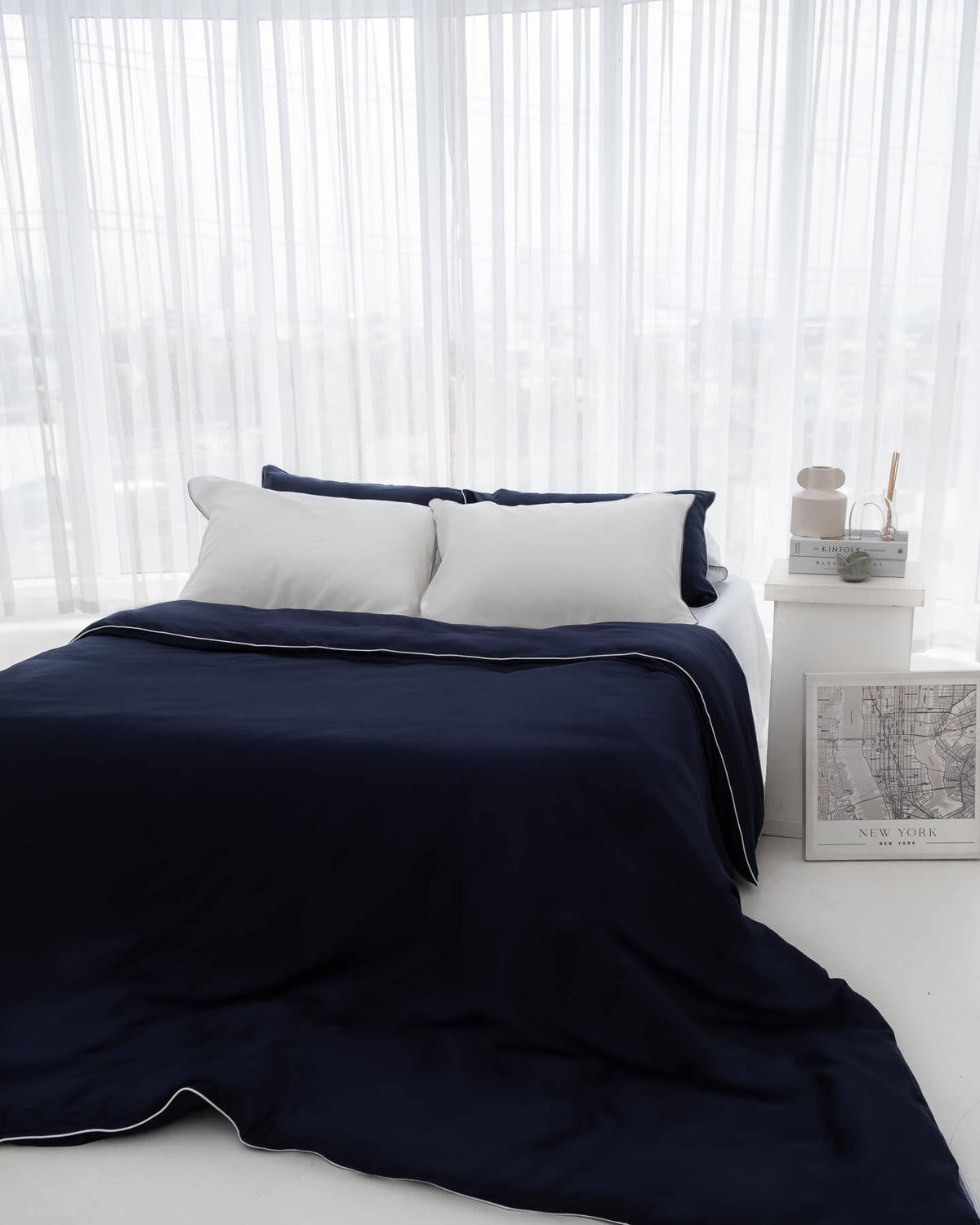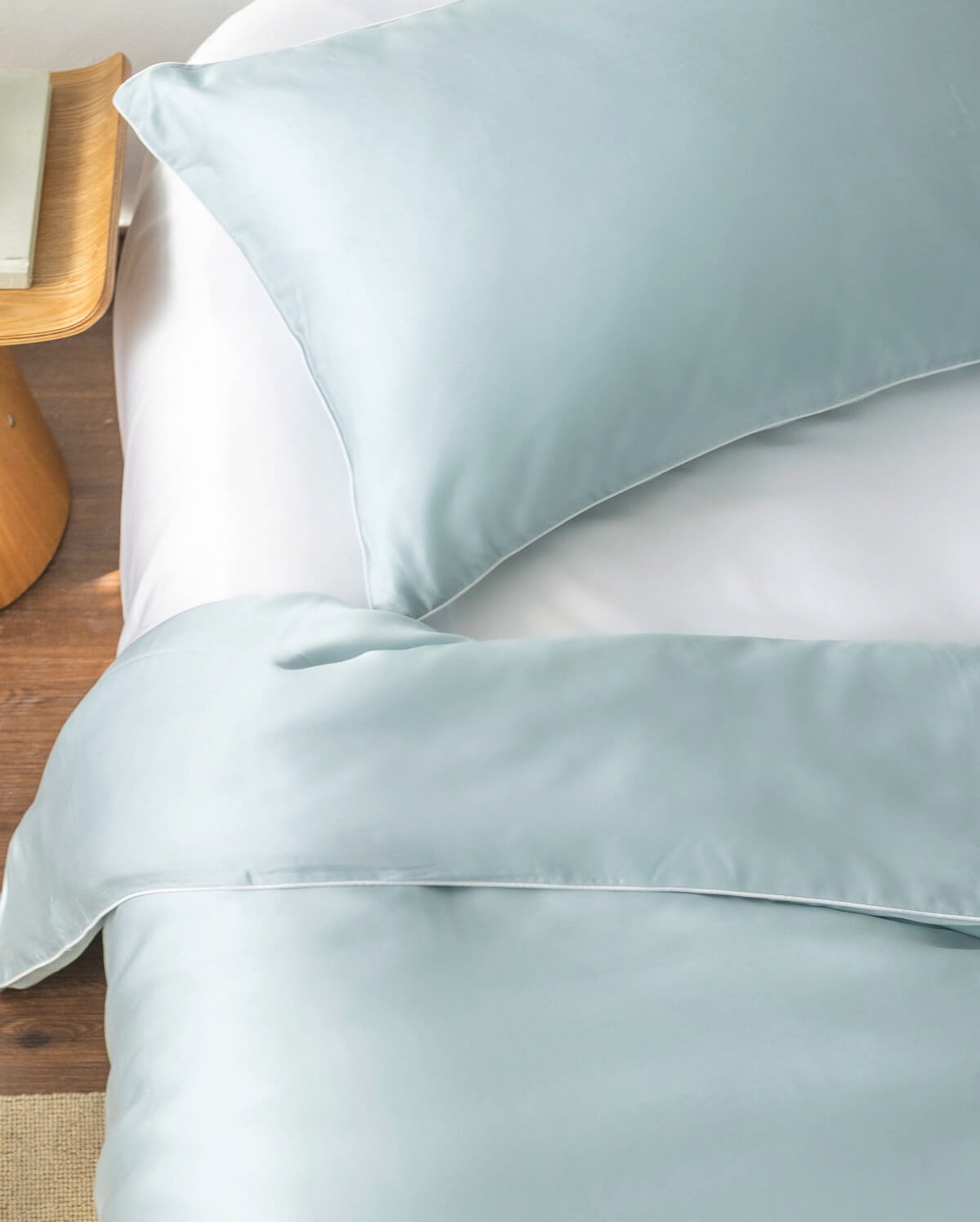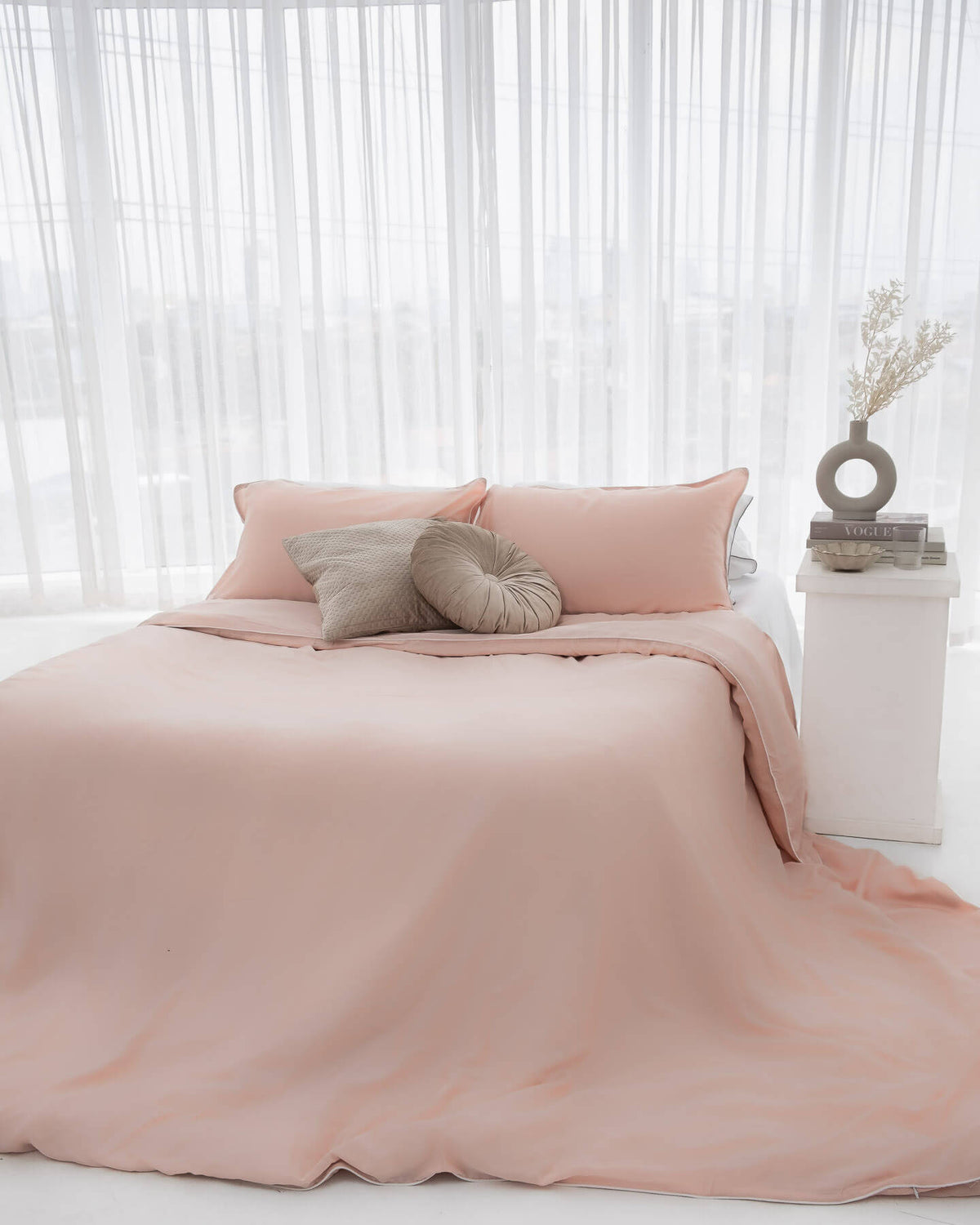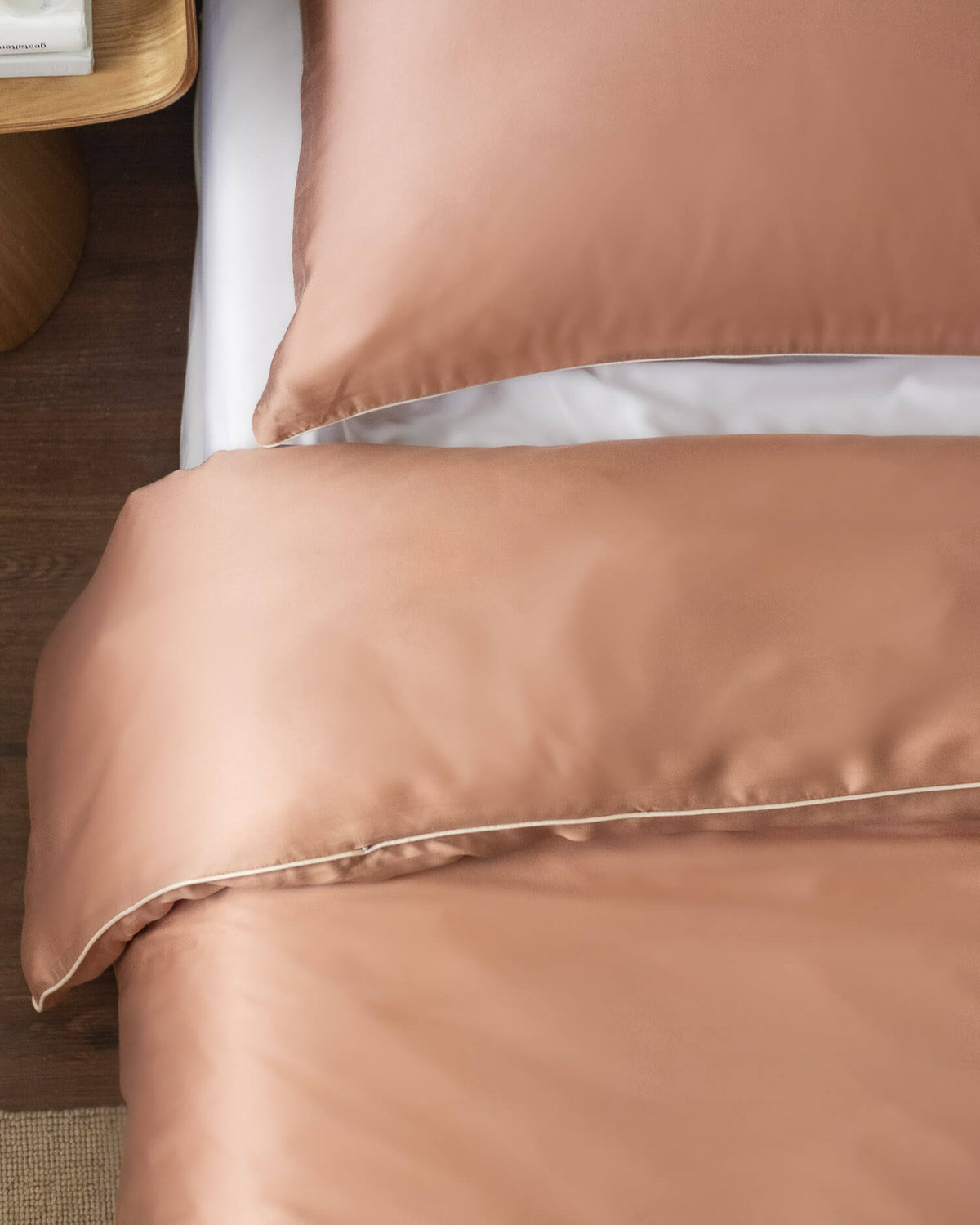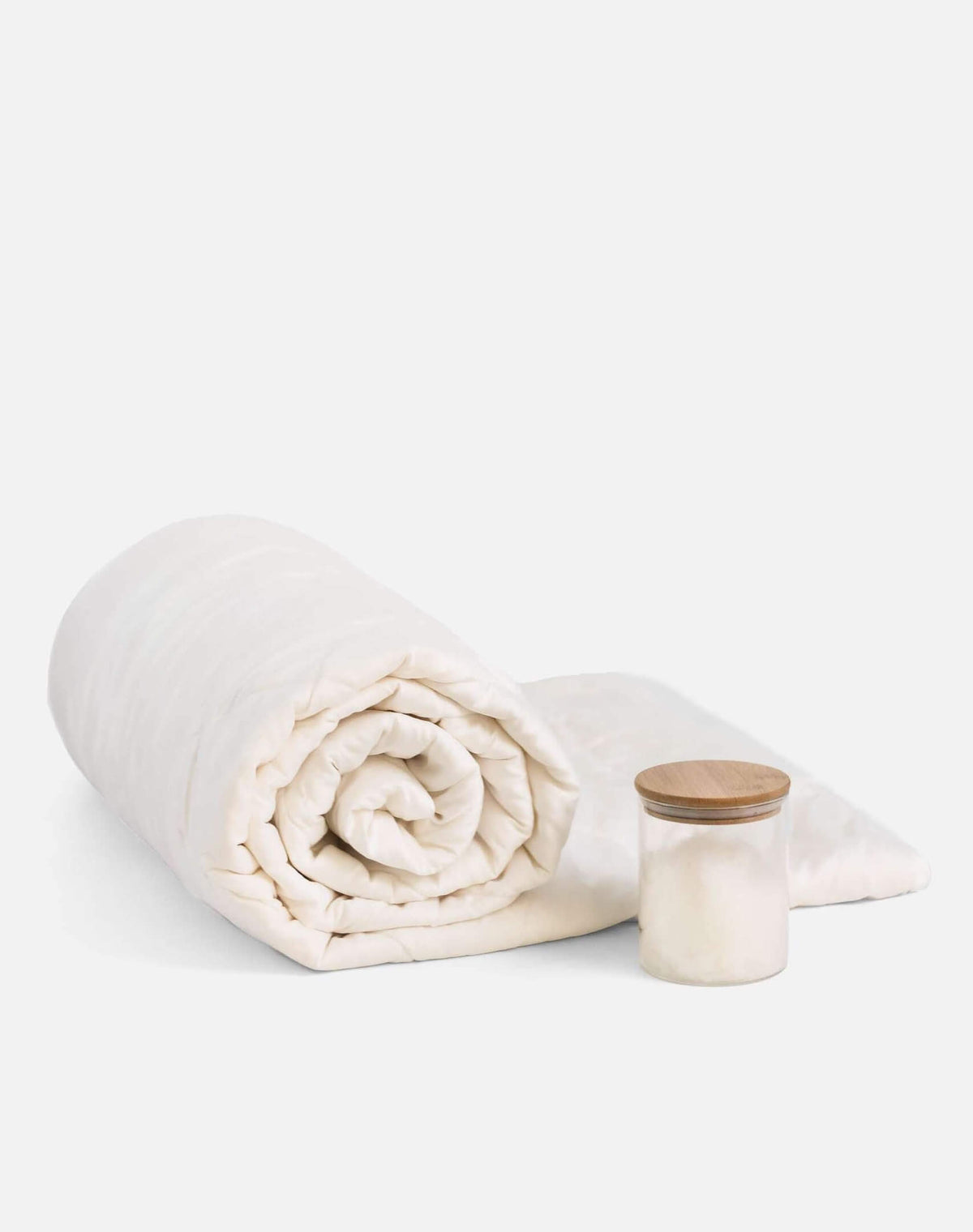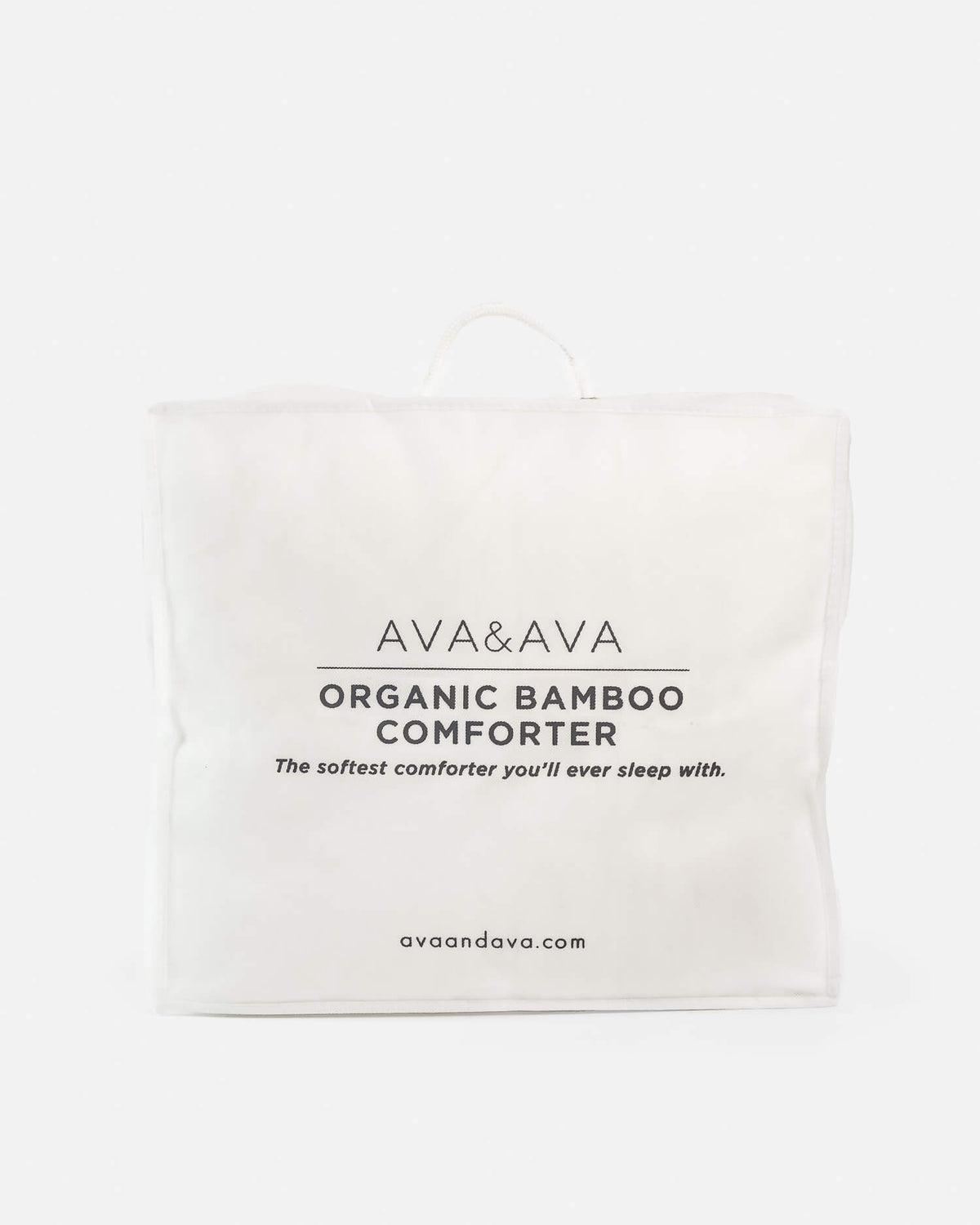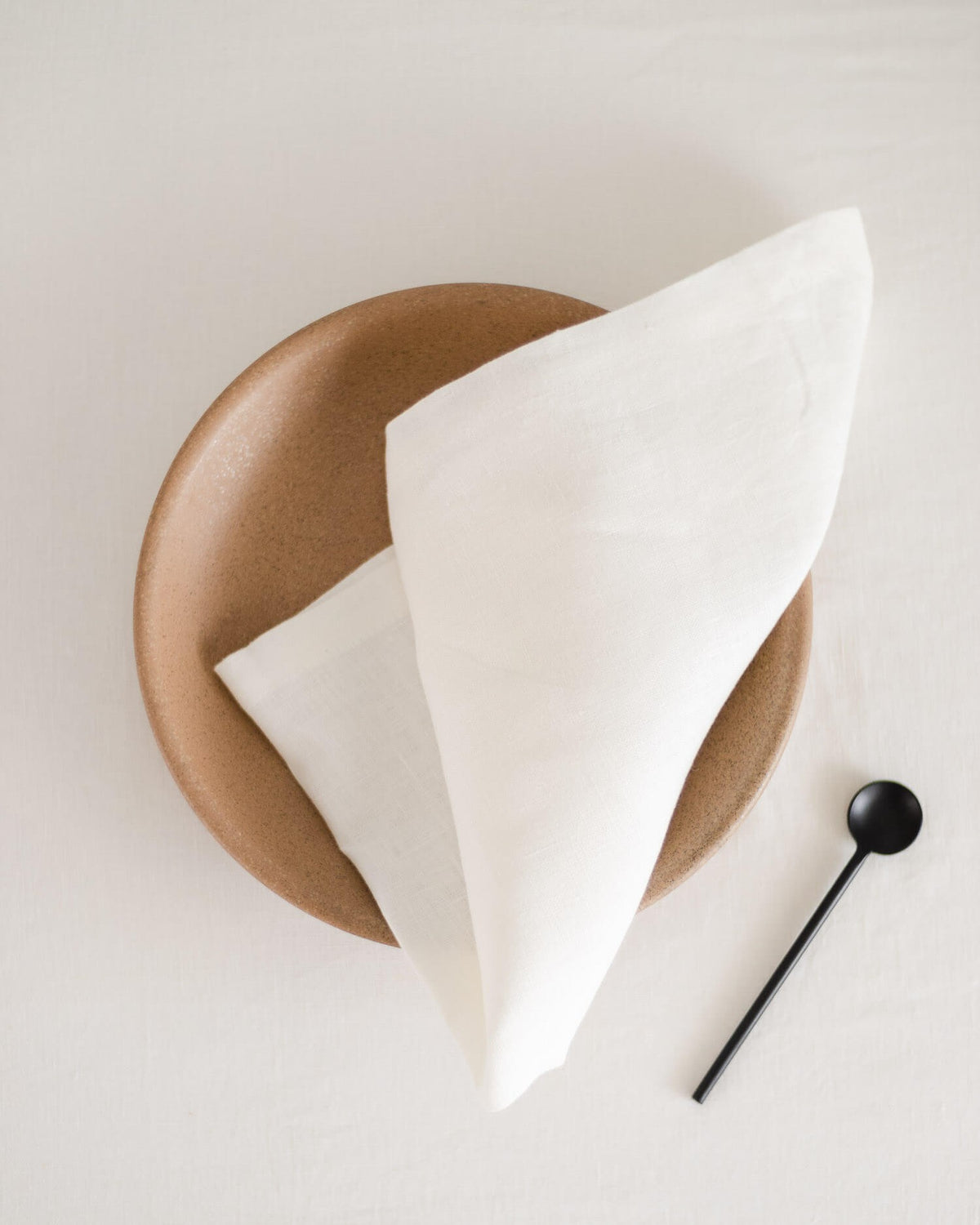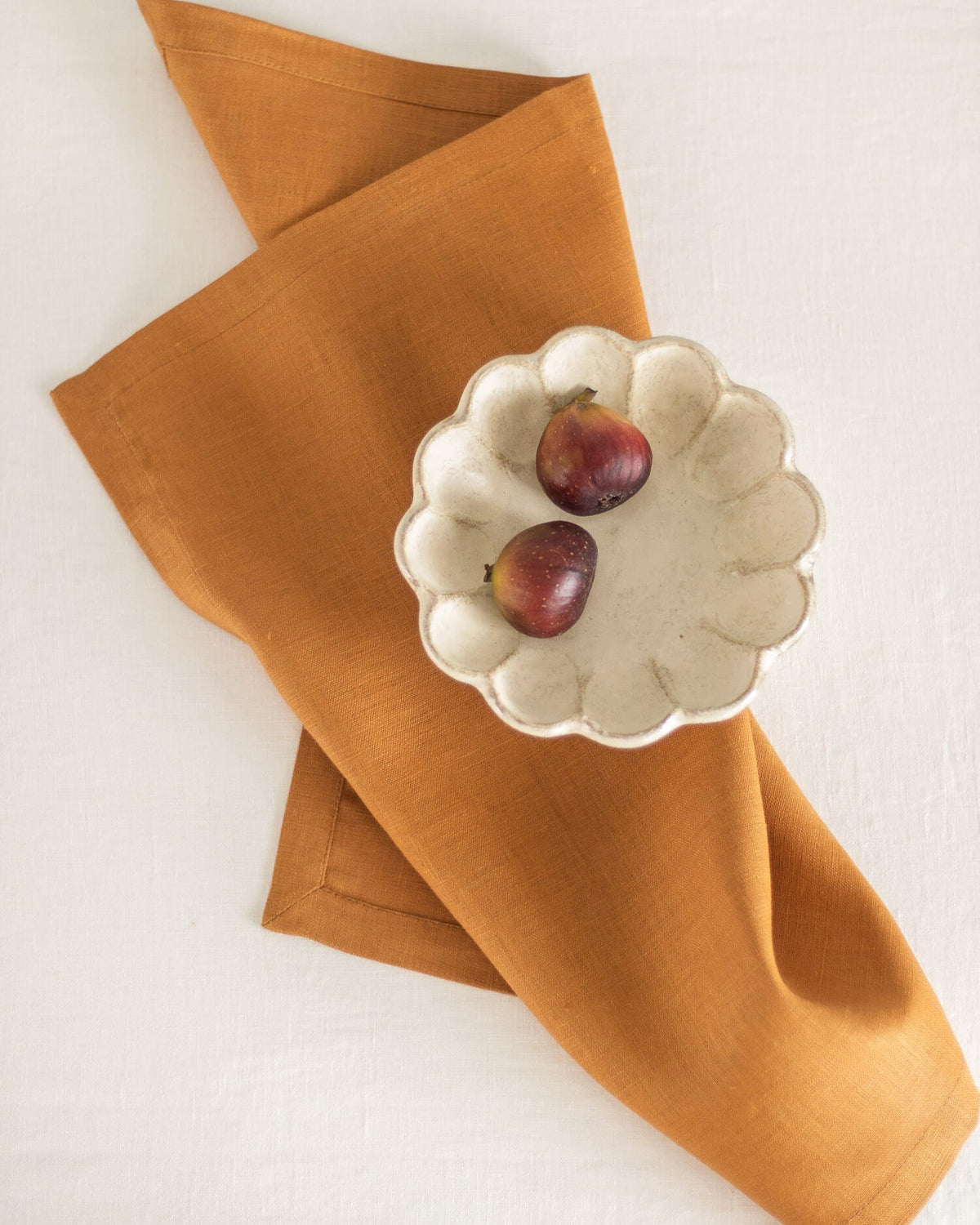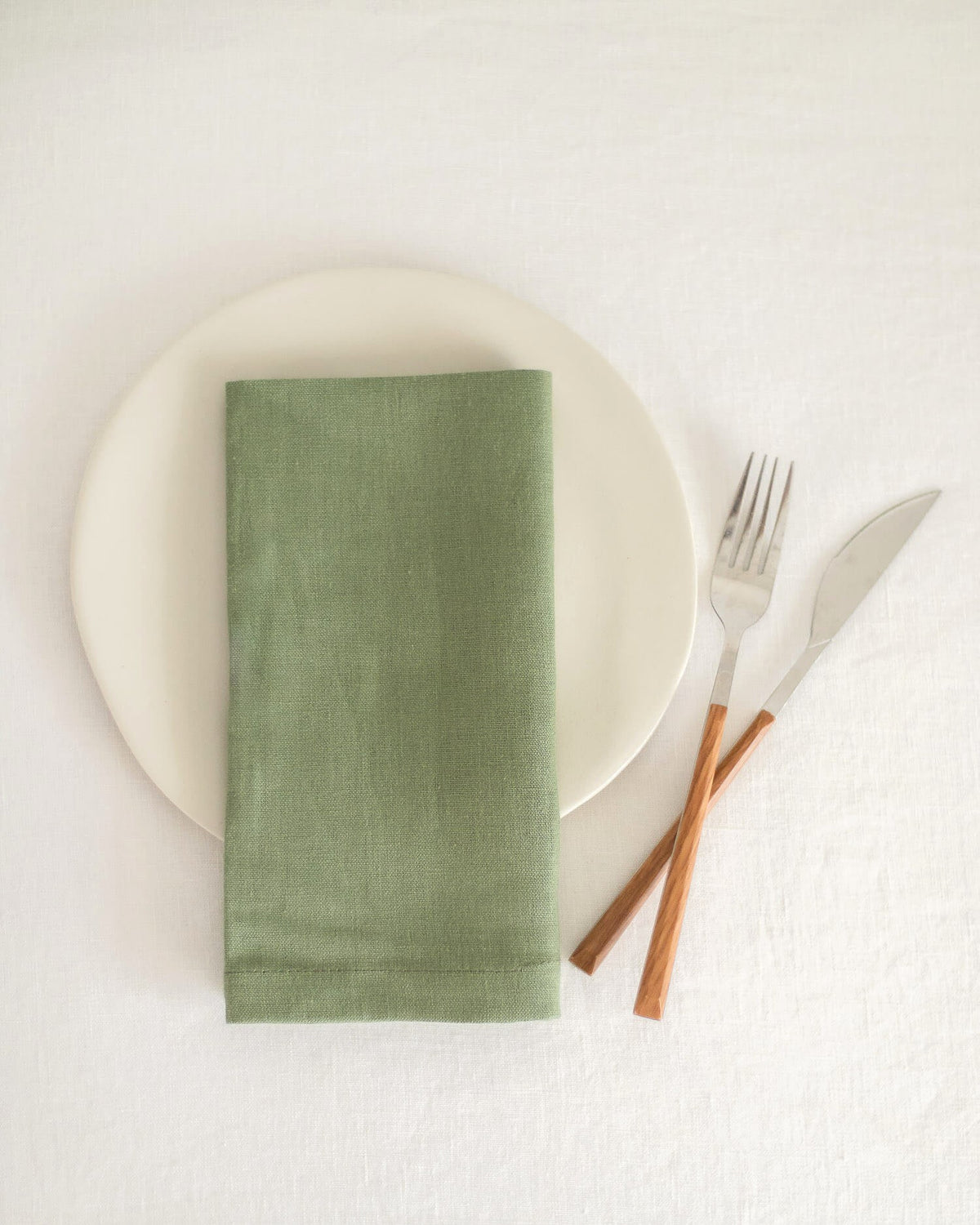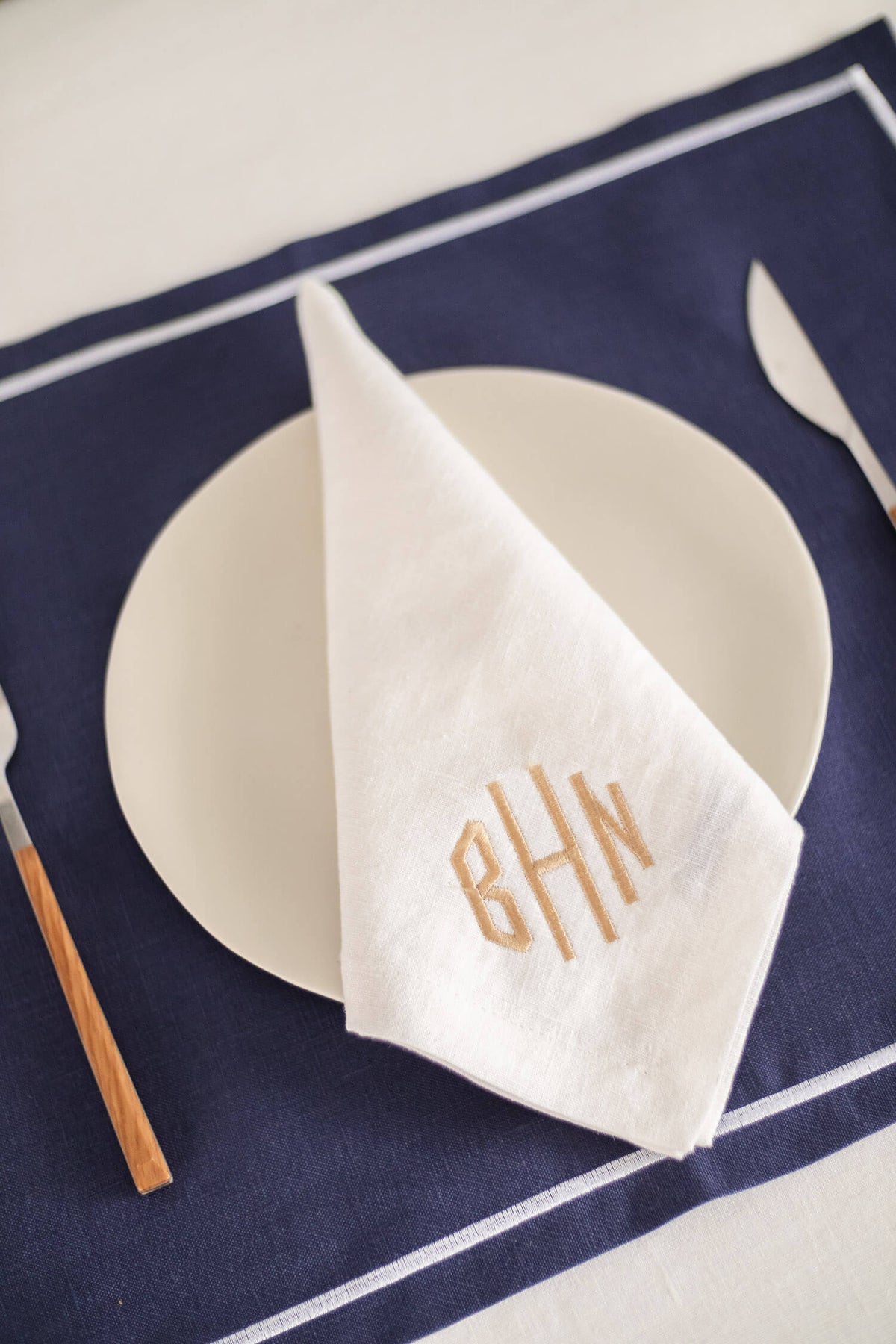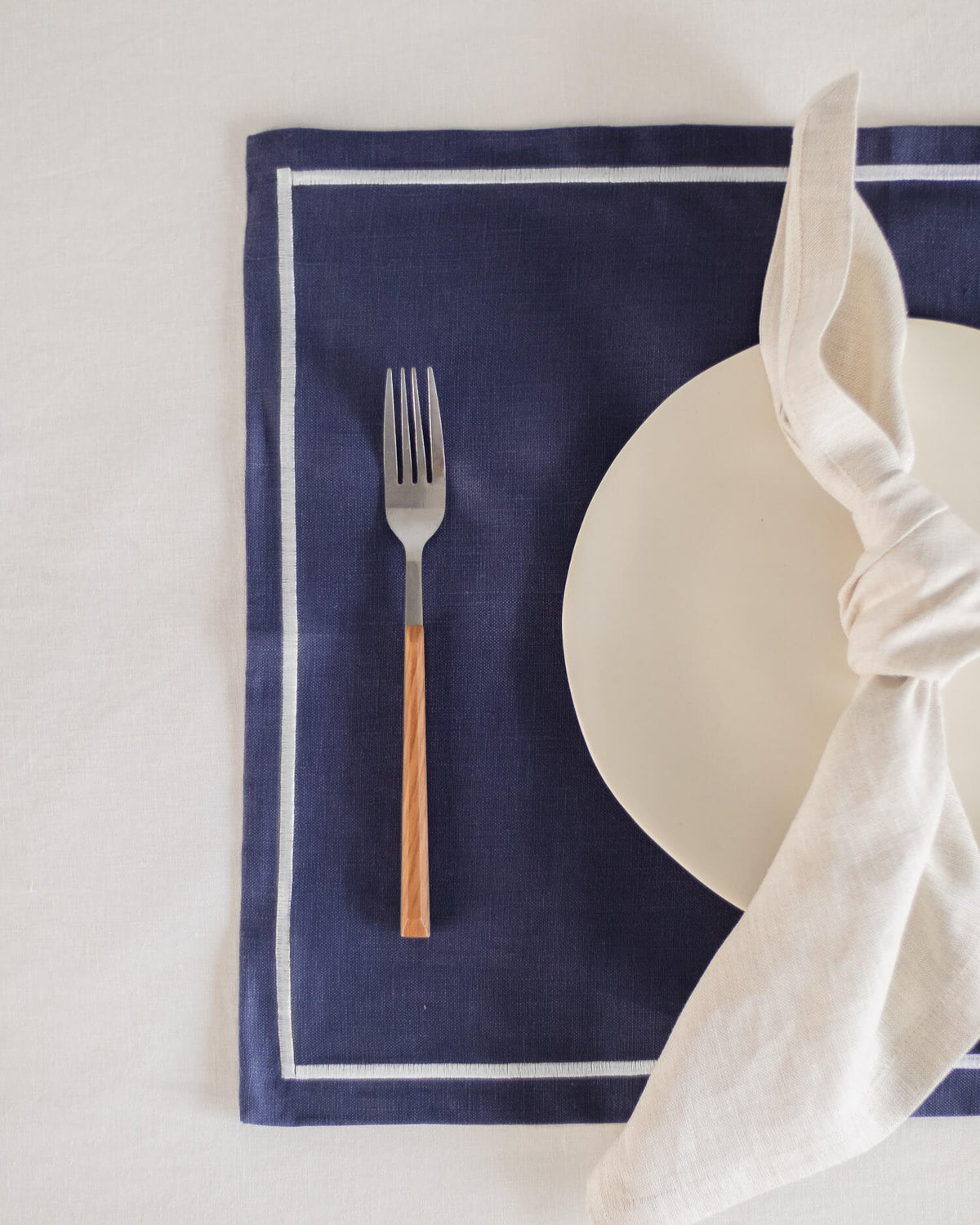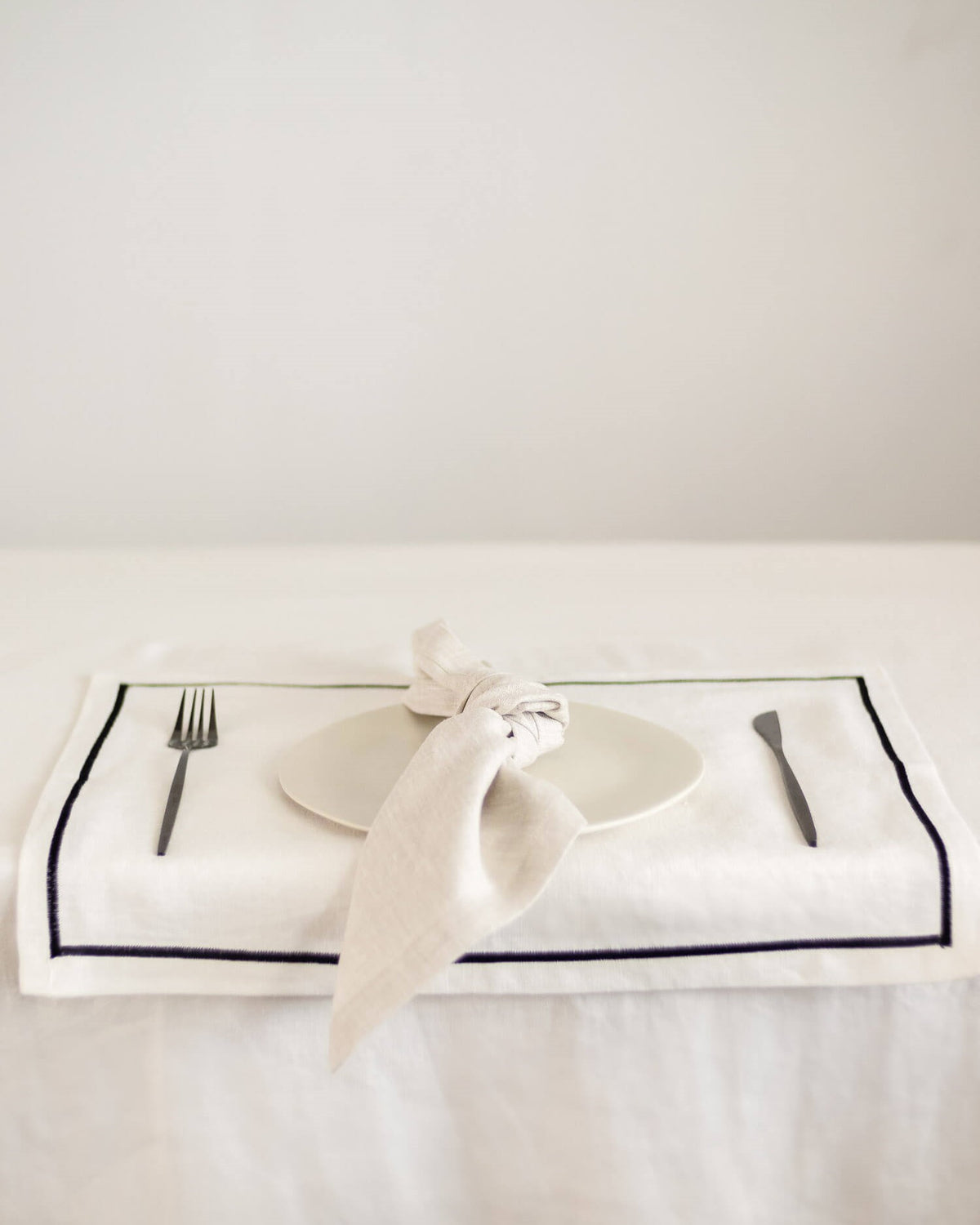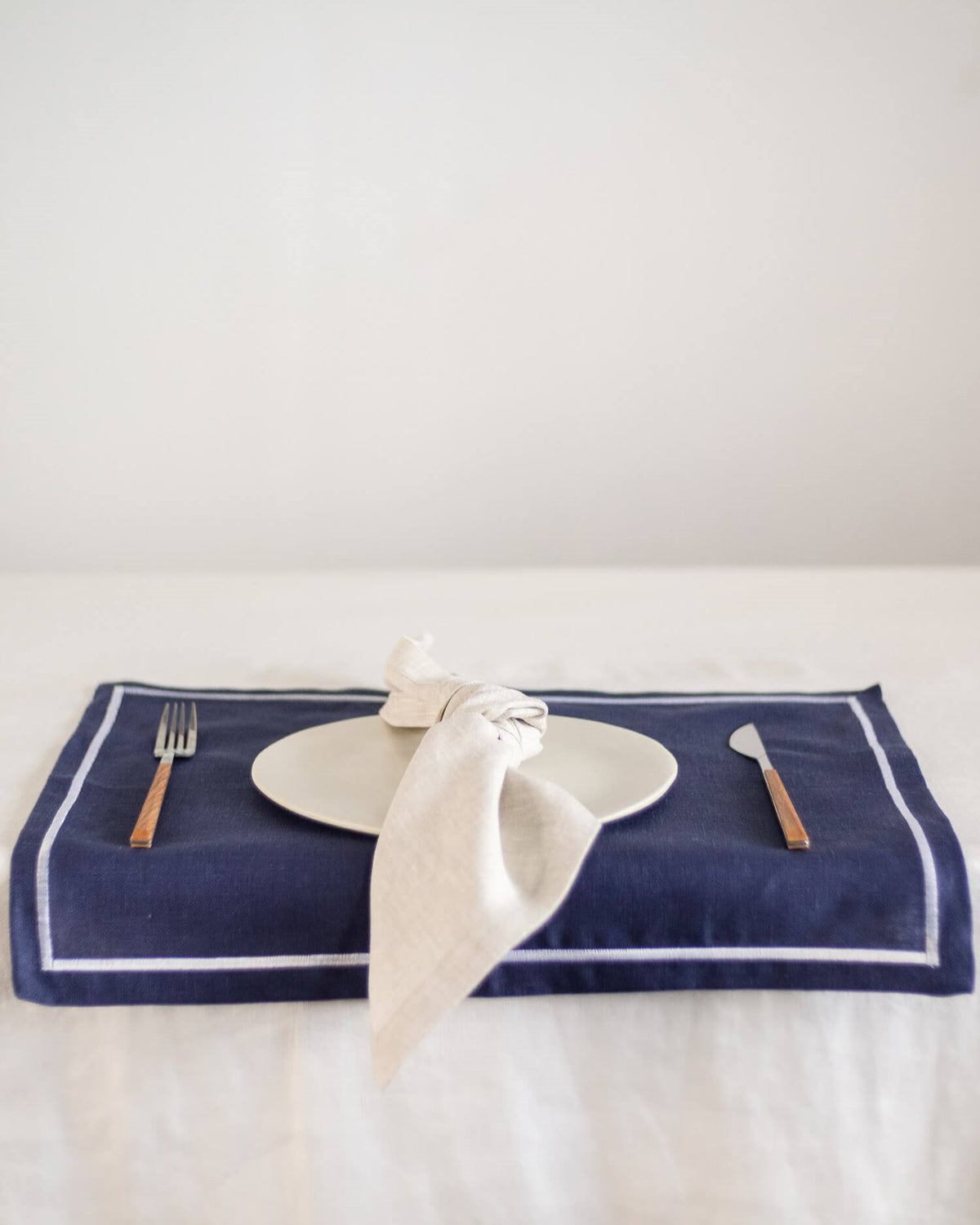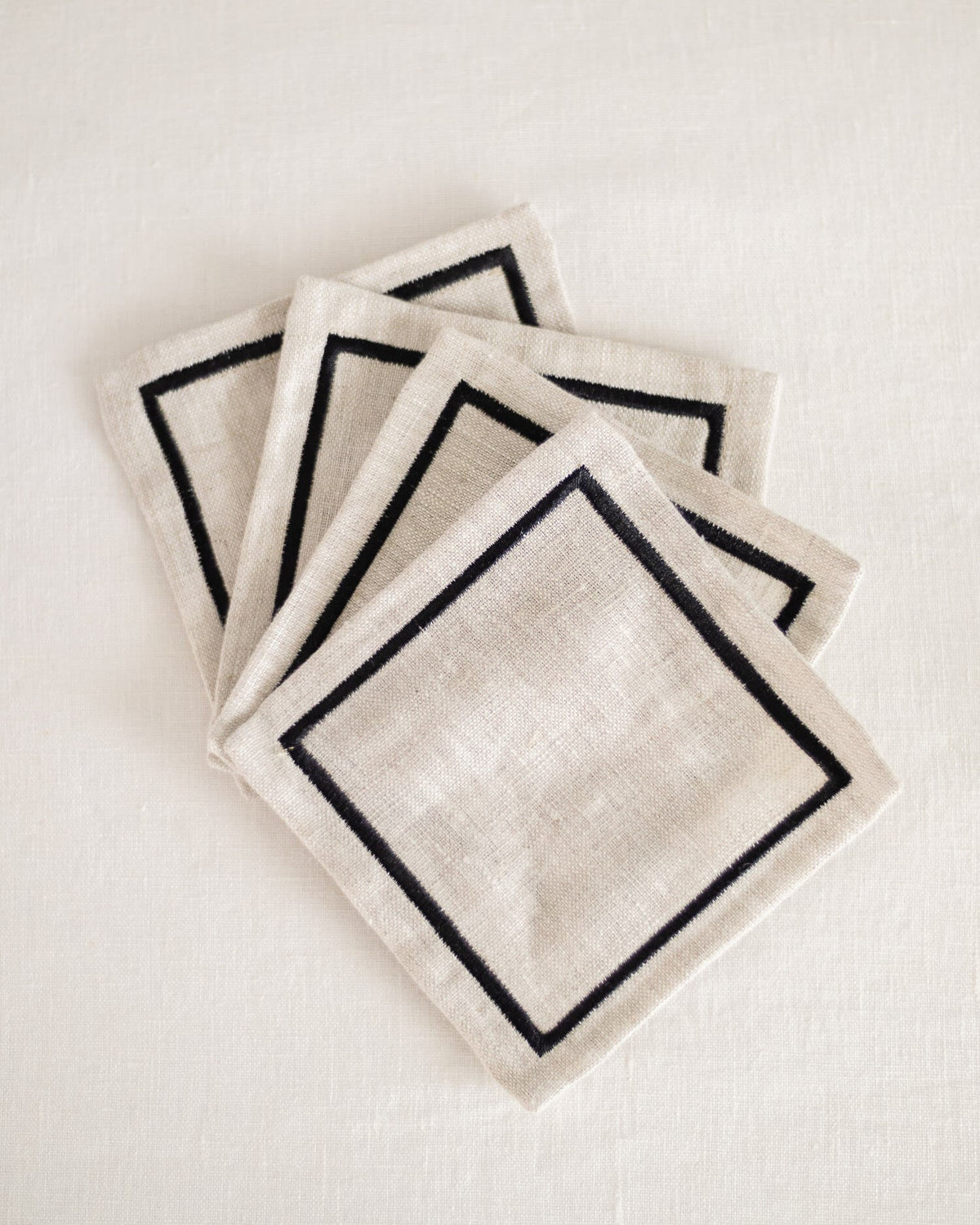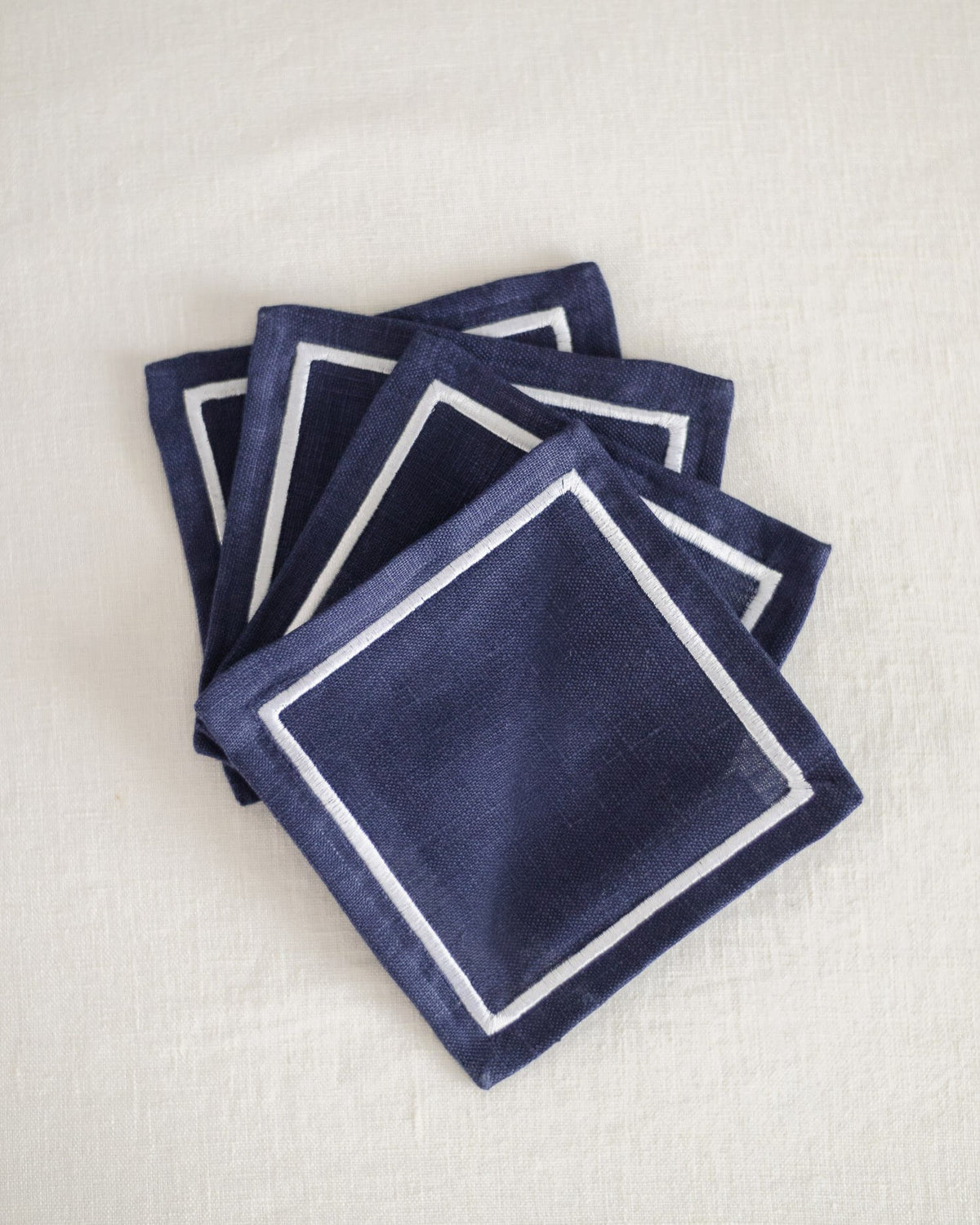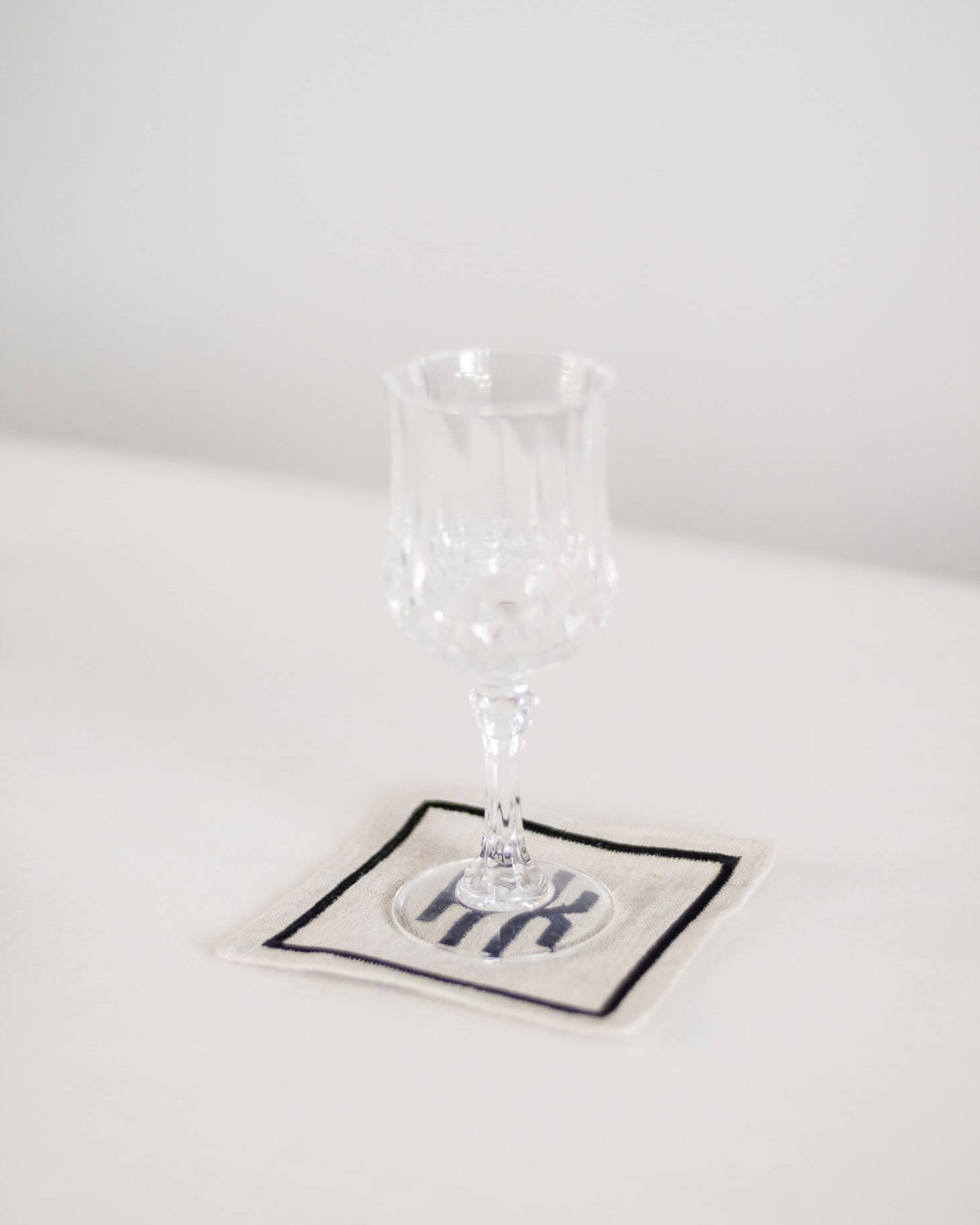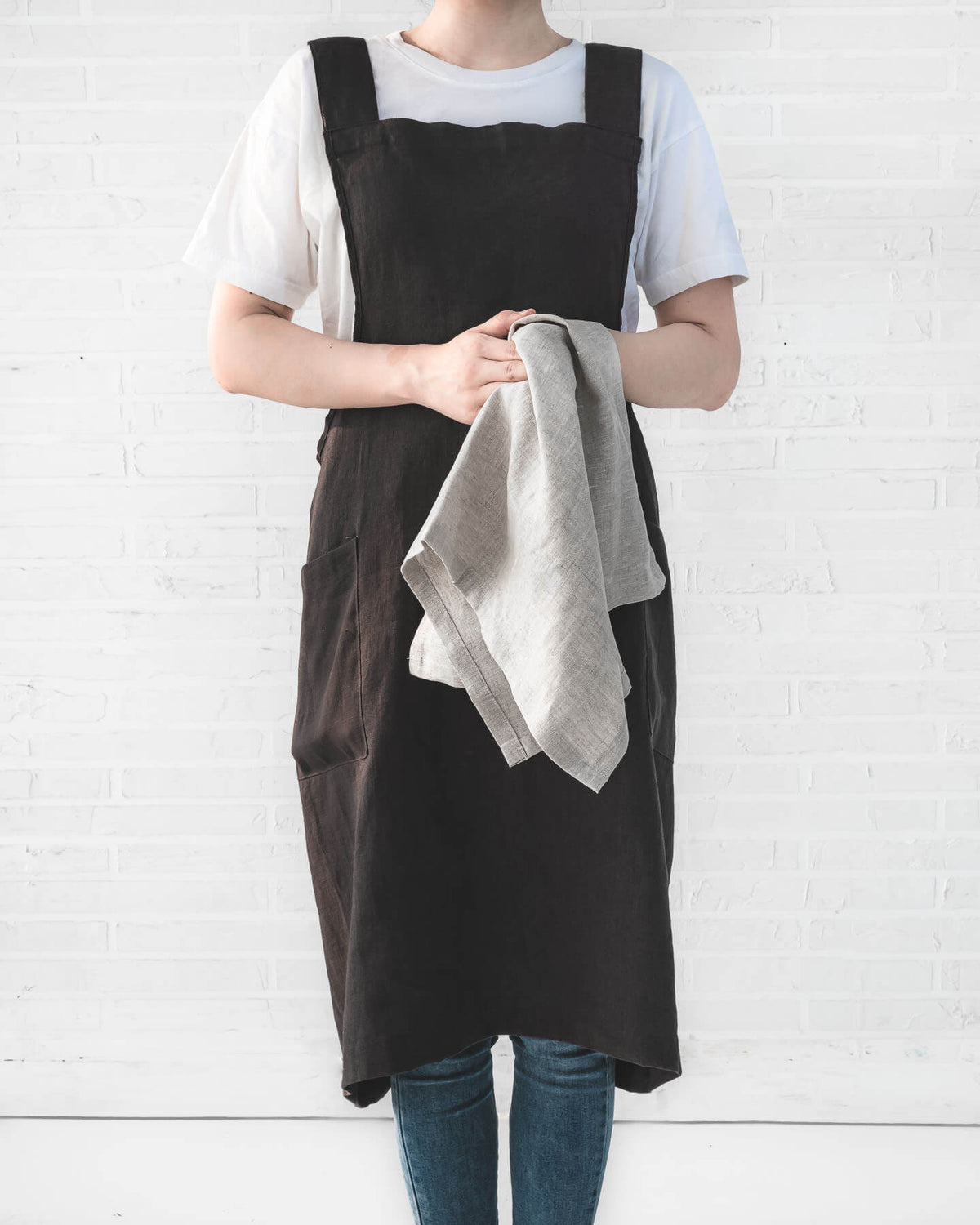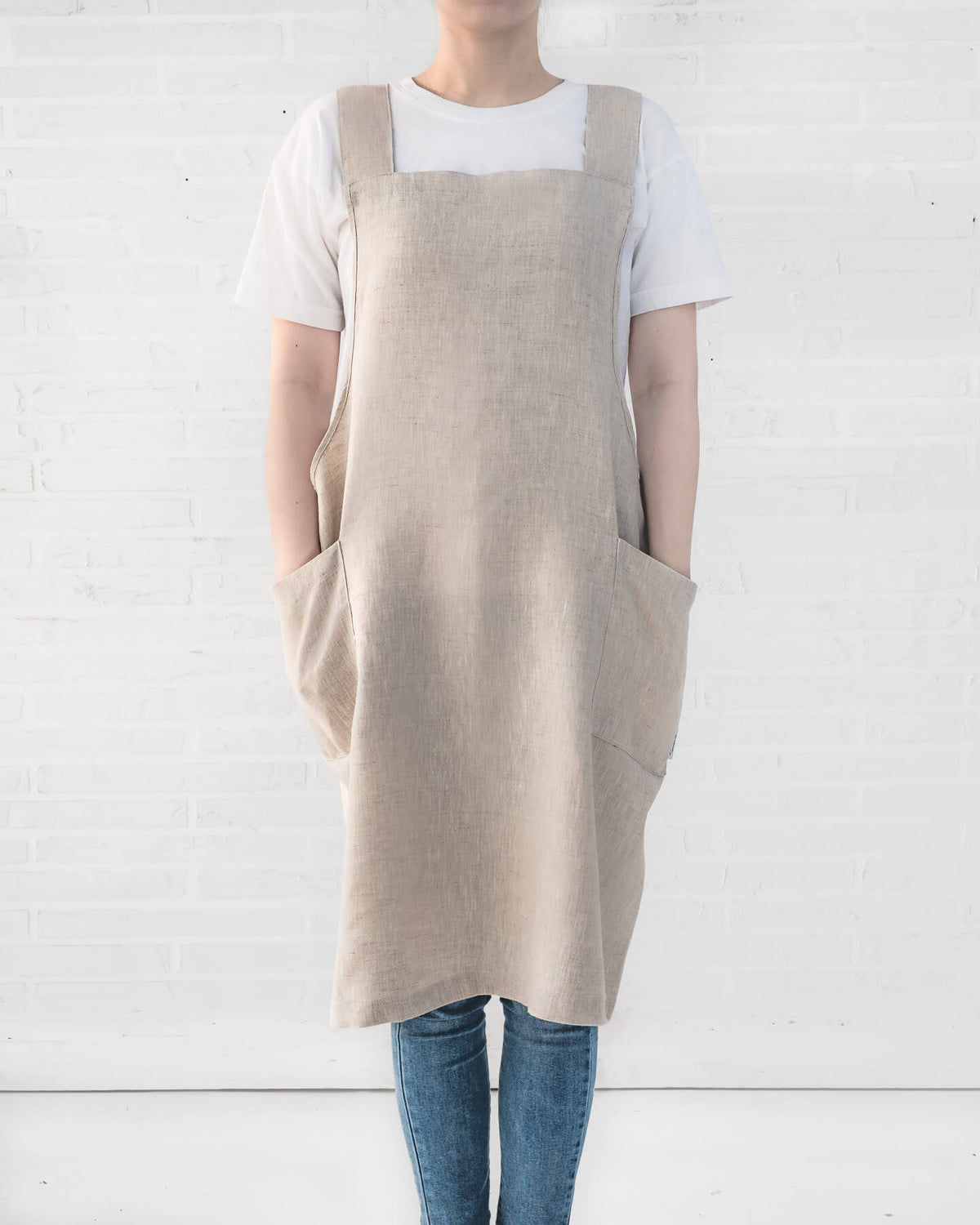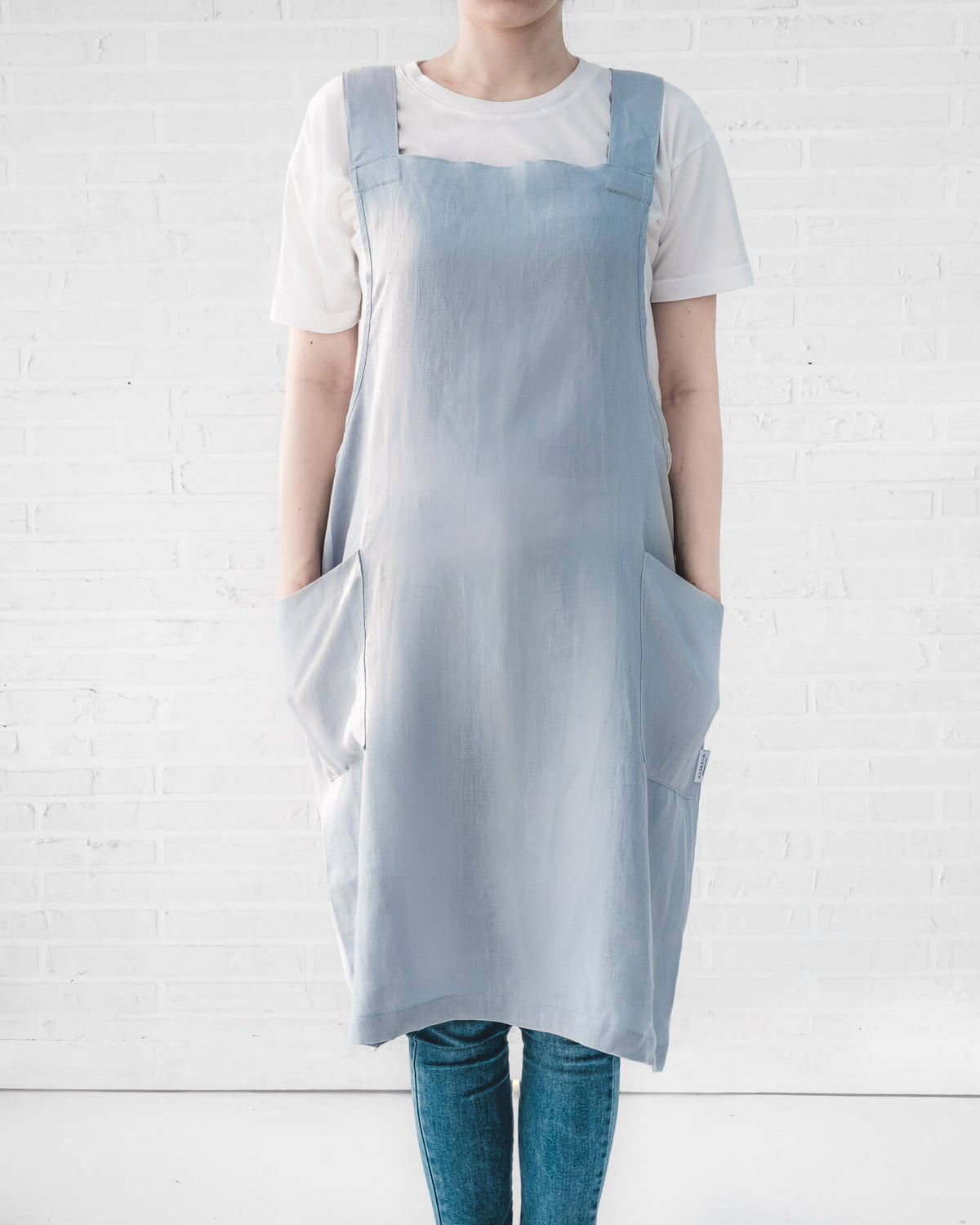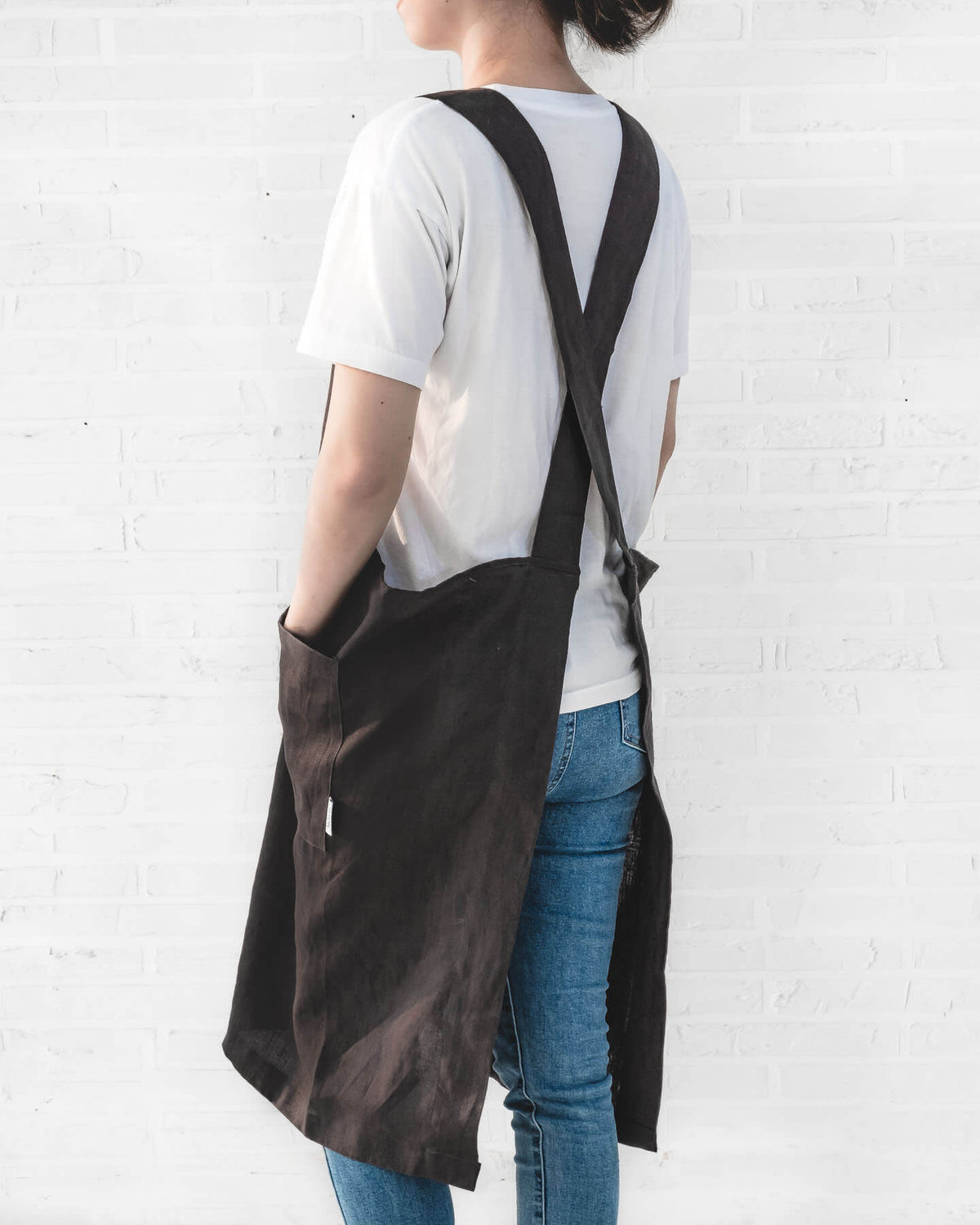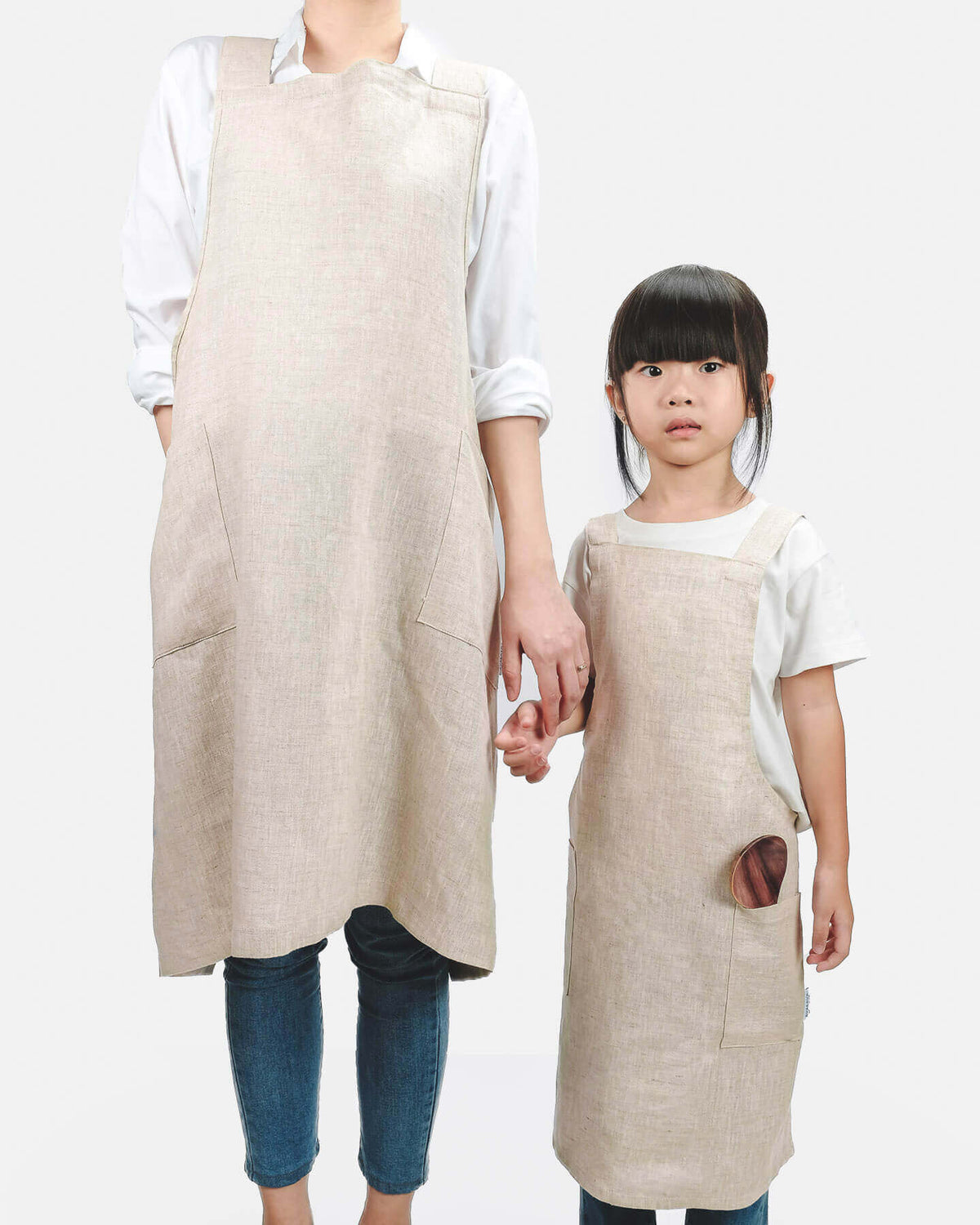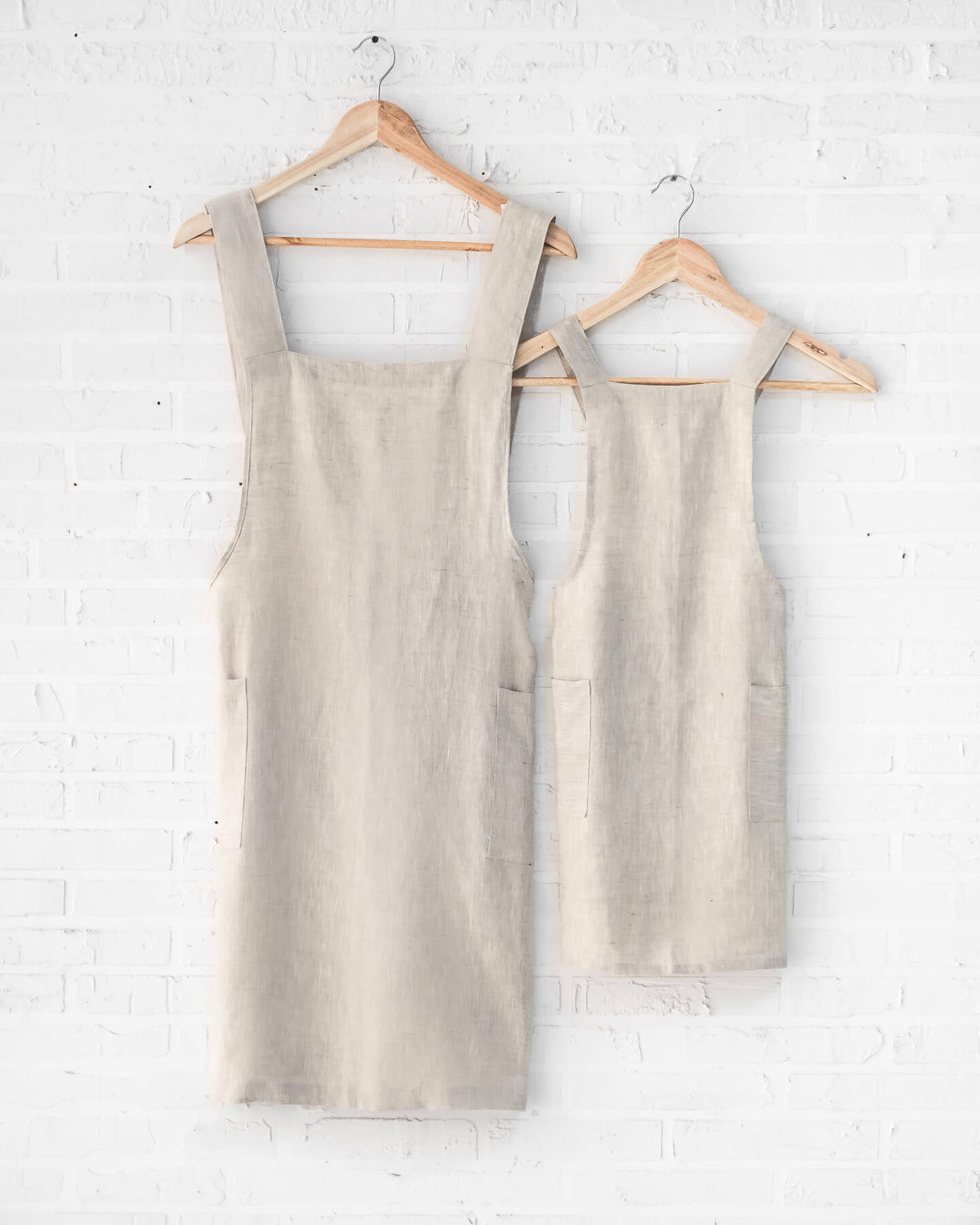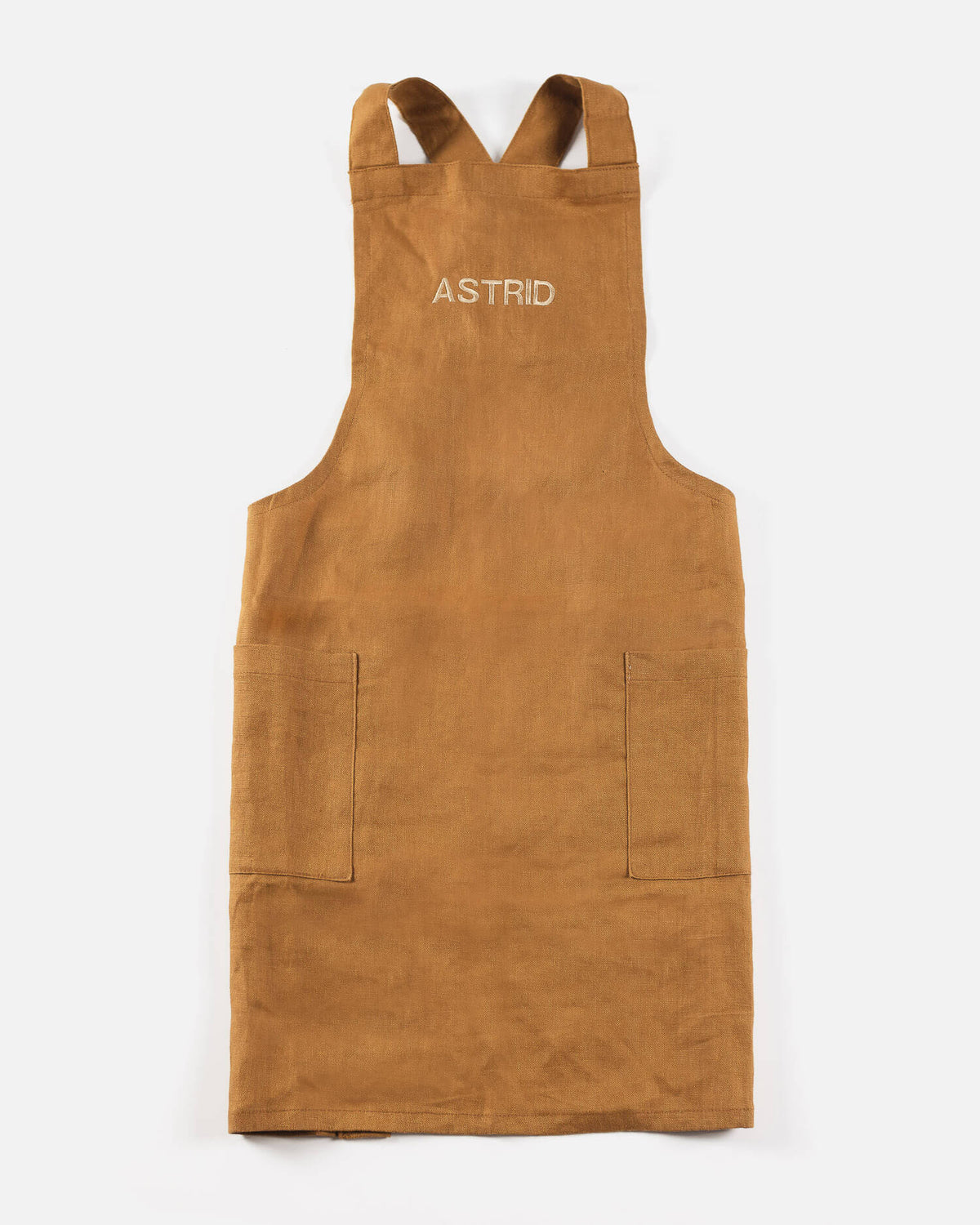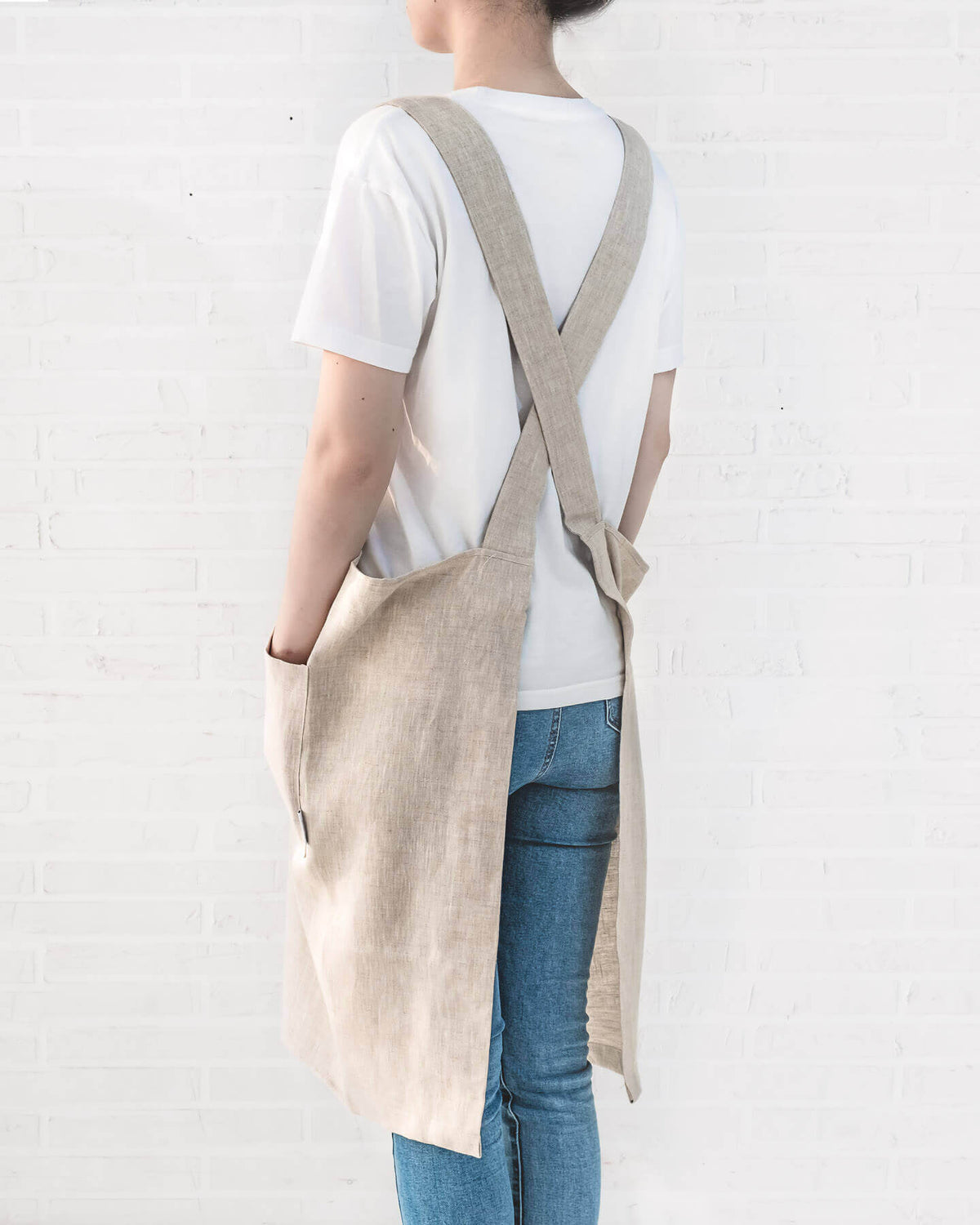What is OEKO-TEX® STANDARD 100?

Breaking down the meaning of "OEKO-TEX® STANDARD 100"
If a certain article is labeled OEKO-TEX® STANDARD 100 Certified, you can be confident that every component of the product, from the fabric to the accessories, has been rigorously tested against a list of up to 350 toxic chemicals, and therefore harmless to your health.
OEKO-TEX® originally tested for about 100 chemicals (hence the name), such as carcinogenic colorants and heavy metals, but today STANDARD 100 covers a wide array of several hundred harmful substances. (OEKO-TEX® Association)
Why is OEKO-TEX® Certification important?
// textile toxicity: harmful consequences for people's health & the environment
The process of making linens such as bed sheets involves several processes including turning raw fiber into threads, weaving them into fabric, and finishing off with dyes and accessories such as buttons. Unfortunately, thousands of chemicals are used along the way. These include heavy-metal-rich dyes and fixing agents, bleaches, and solvents. Many are toxic and pose health hazards to workers and consumers, and pollute freshwater systems. They harm our health as we breathe and touch them — triggering allergies or causing skin conditions such as eczema. As skin is permeable, these chemicals get absorbed by our bodies and have detrimental effects on our health in the long run.
This is particularly concerning for products used by young ones, whose brains and bodies are still developing, as well as for bedding, which we use for extended periods daily (~1/3 of our lives!).

OEKO-TEX® Certification is even more important for babies whose skin is delicate, and whose lungs and brains are still developing
OEKO-TEX® was founded in response to this, with a goal to provide us the peace of mind that the textile products we buy are safe for our health and the environment. They achieve this through an independent, third-party product label called STANDARD 100 by OEKO-TEX® (OEKO-TEX® STANDARD 100, in short).
Who is OEKO-TEX® and are they reliable?
Trusted Worldwide
Since 1992, the Zurich-based OEKO-TEX® Association has been the world's best-known label for textile safety. Having high standards for product safety, OEKO-TEX® works with chemical limit values that in many cases go beyond international standards.
Multiple research expertise
The laboratory tests are not led by a single research and testing facility, but are backed by the collective knowledge of 17 independent research and test institutes in Europe and Japan, each with proven expertise. They include founding members German Hohenstein Institute and the Austrian Textile Research Institute.
Consistently Updated
To stay ahead of changes in materials and technologies, OEKO-TEX®'s criteria catalog is updated at least once a year and expanded with new scientific knowledge or statutory requirements.
How does OEKO-TEX® Certification differ from "organic" and "lyocell"?
One limitation of OEKO-TEX® Standard 100 is that it only certifies the safety limits of the end product's residues, without caring about the origin and the process it has gone through. Having markers such as "organic" and "lyocell" (in bamboo's case) is helpful for developing complete confidence on the product's textile safety and environmental impact.
What is organic?
Organic textiles are made from fibers grown with no synthetic fertilizers and pesticides. Long term exposure to pesticides and its residues can be harmful for both workers and consumers. The use of pesticides and fertilizers can also lead to environmental issues such as air pollution, soil degradation and water contamination.
Cotton covers just 2.4% of the world’s cultivated land but uses 6% of the world’s pesticides (and 16% of insecticides), more than any other single major crop! Seven of the 15 pesticides commonly used on cotton in the US are listed as “possible,” “likely,” “probable” or “known” human carcinogens by the Environmental Protection Agency.
What is Bamboo Lyocell?
If organic relates to the start of the process and OEKO-TEX® takes care of the end, what about what happens in-between?
Most bamboo sheets are made of bamboo viscose, also known as bamboo rayon. Unfortunately, this requires chemically-intensive processes that negatively impact the environment, workers, and local communities. Bamboo viscose uses the solvent carbon disulfide, which has been linked to widespread severe and often lethal illness among workers, and can cause harm to the reproductive and nervous systems. What's more, the solvent recovery in most factories is just 50%, which means that the other half ends up contaminating waterways and endangering aquatic life. OEKO-TEX® certification does not account for this as it only focuses on the end, not the means.
In response to this, Bamboo Lyocell was developed in the 1990s and is the latest generation of bamboo textile. It uses a non-toxic solvent (amine oxide) to dissolve bamboo pulp, producing non-hazardous waste. It undergoes a closed-loop process, meaning 99% of the solvent and process water are recycled and used over and over again, thus preserving communities and aquatic life. Apart from social and environmental benefits, the resulting bamboo fabric is also stronger and softer than viscose, free from harmful chemicals, biodegradable, and requires less energy and water to produce.
-
